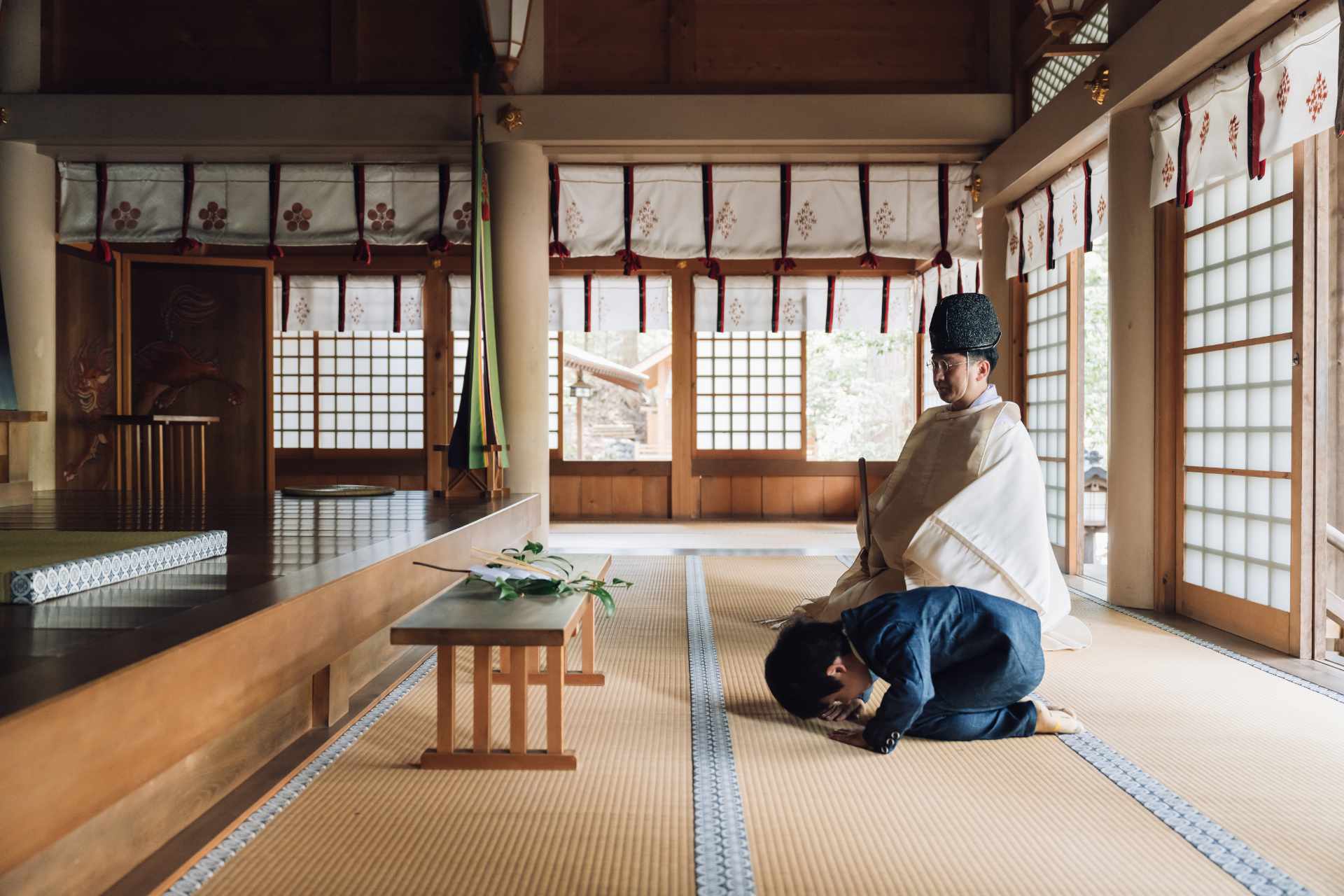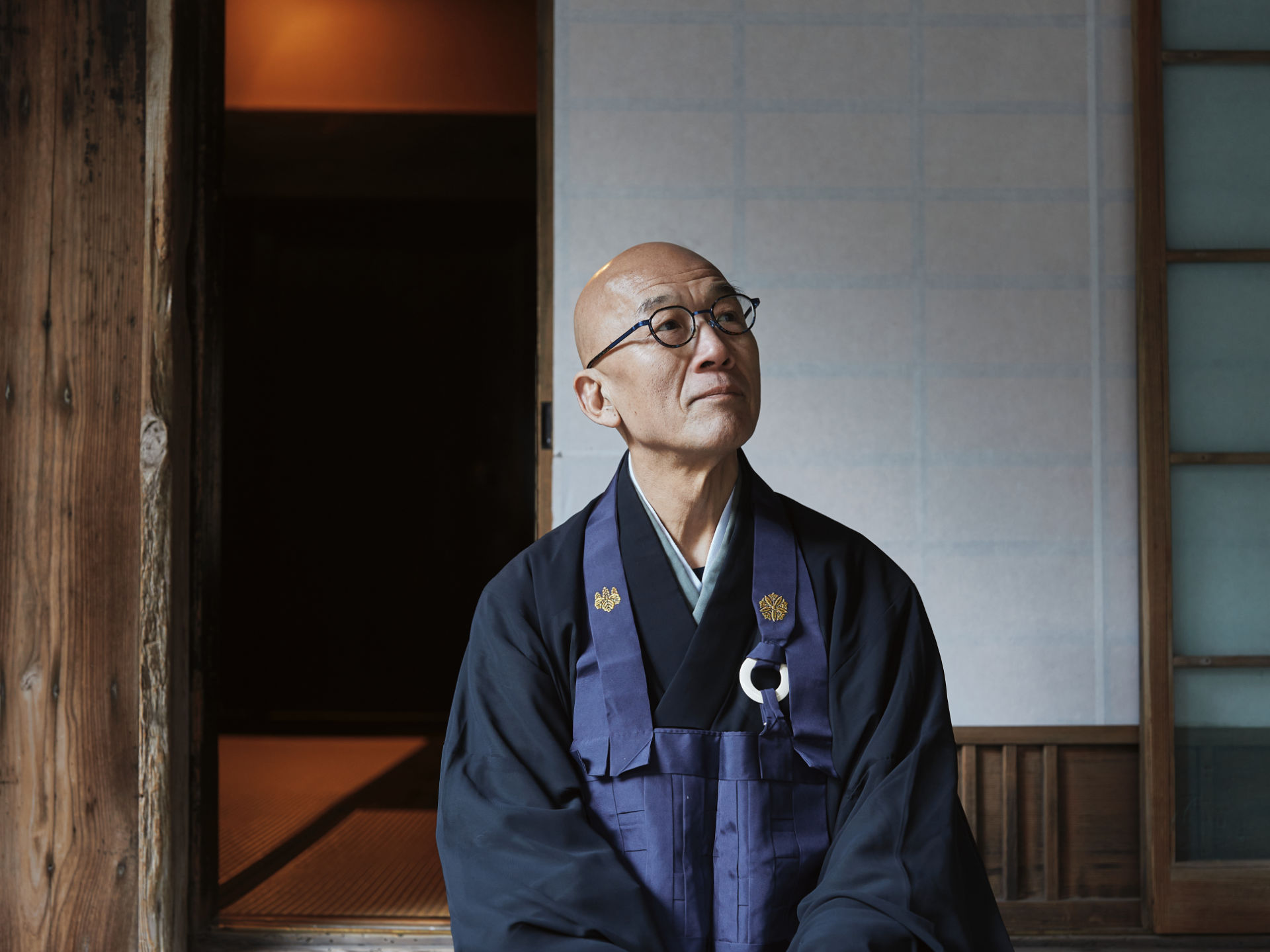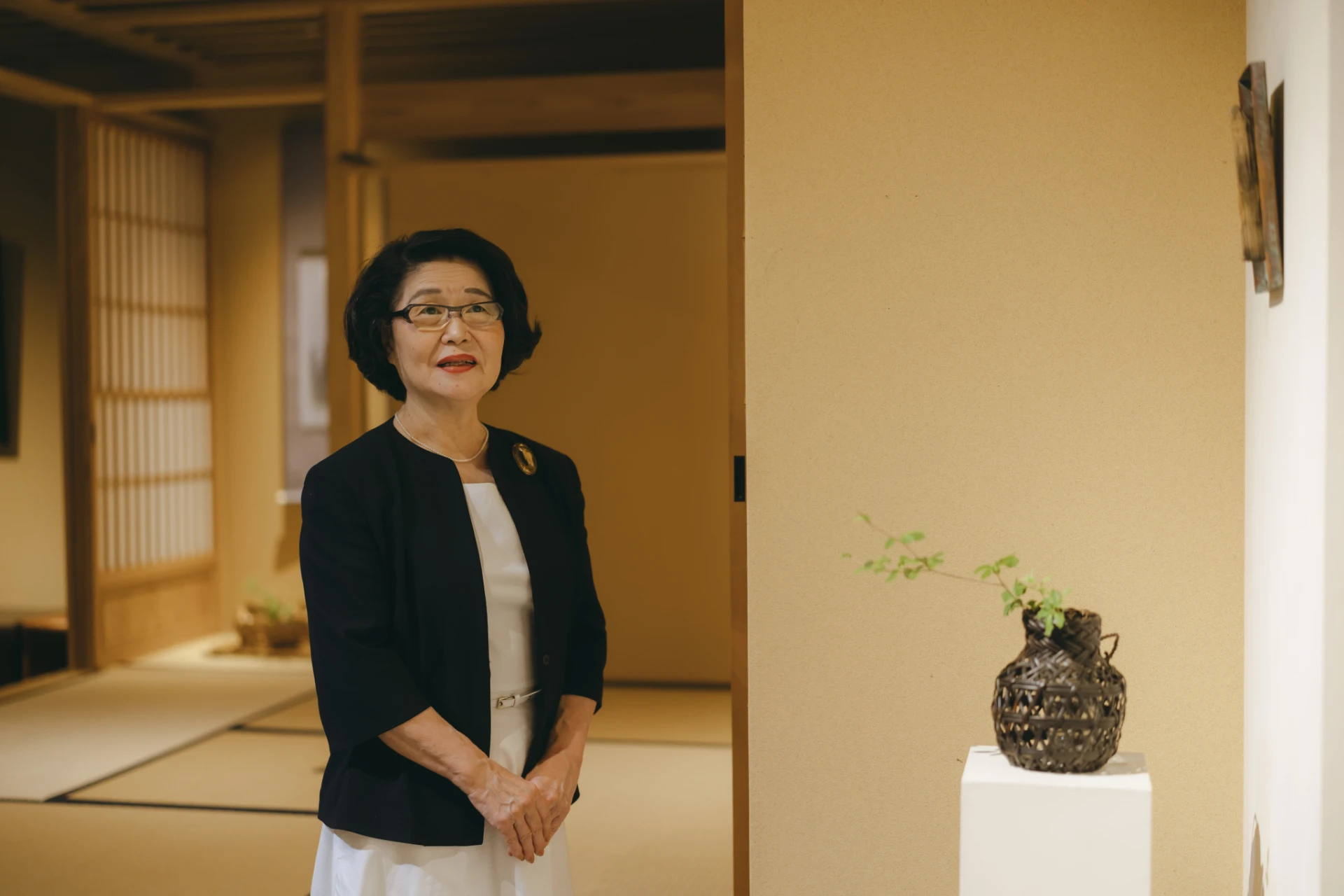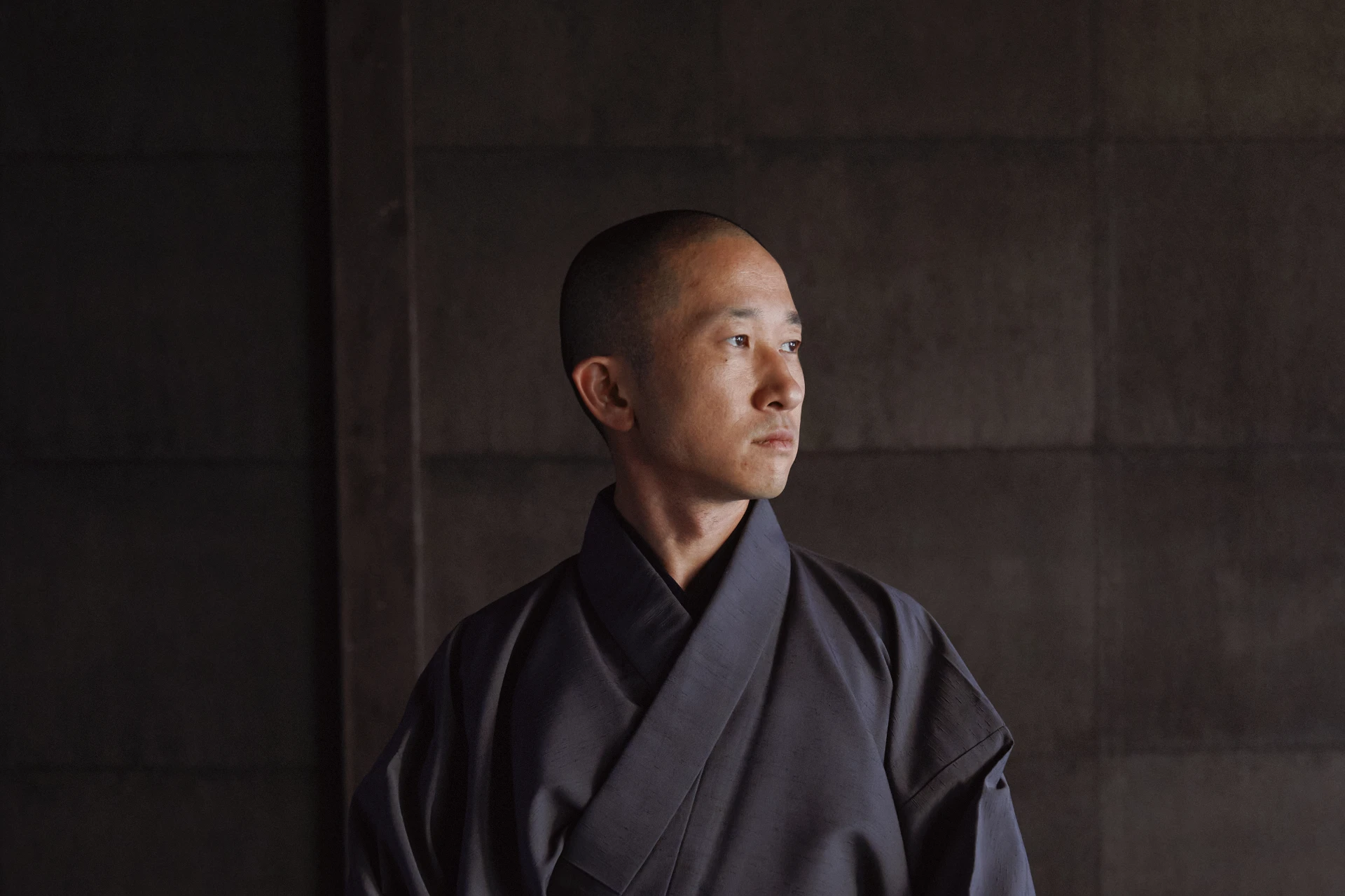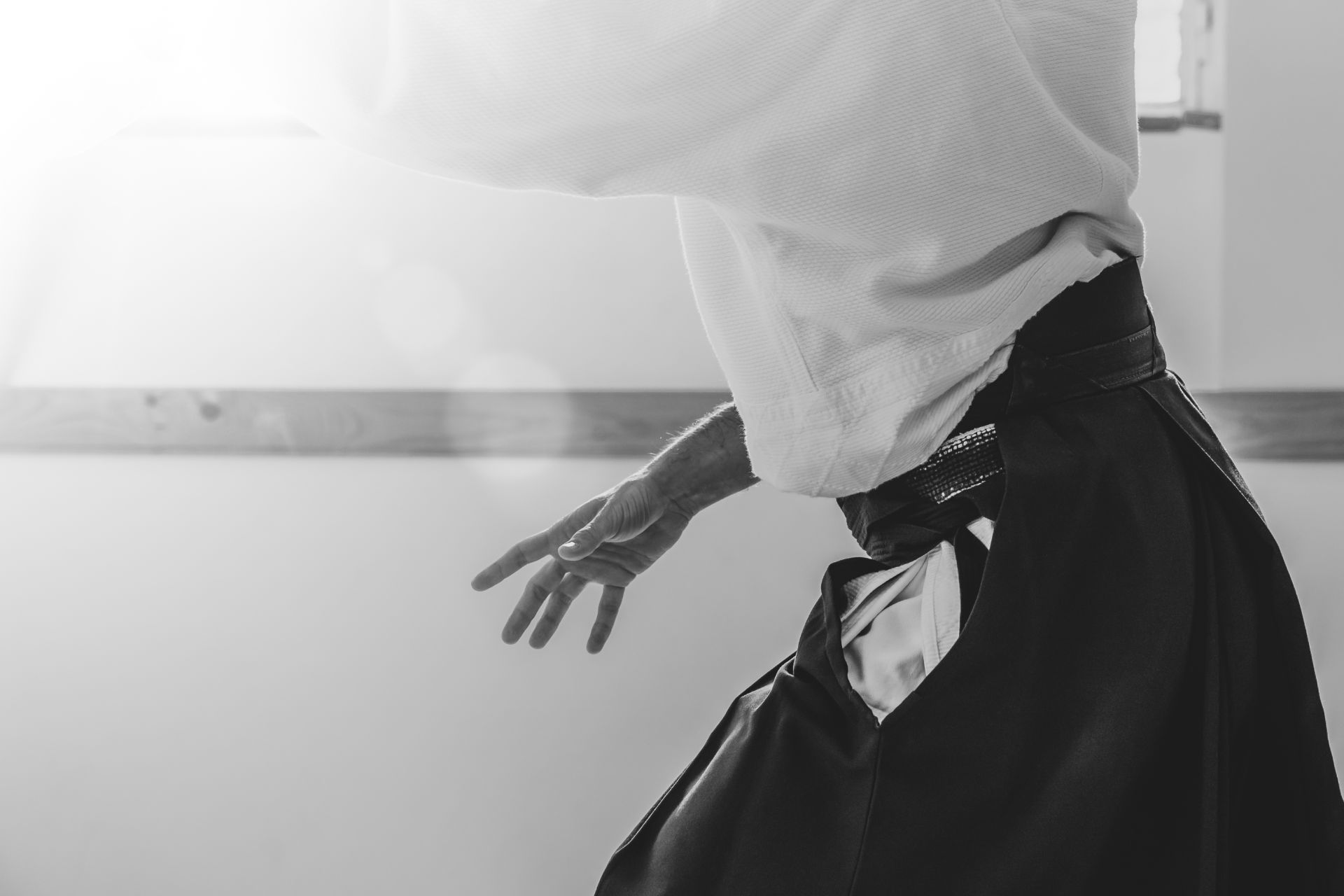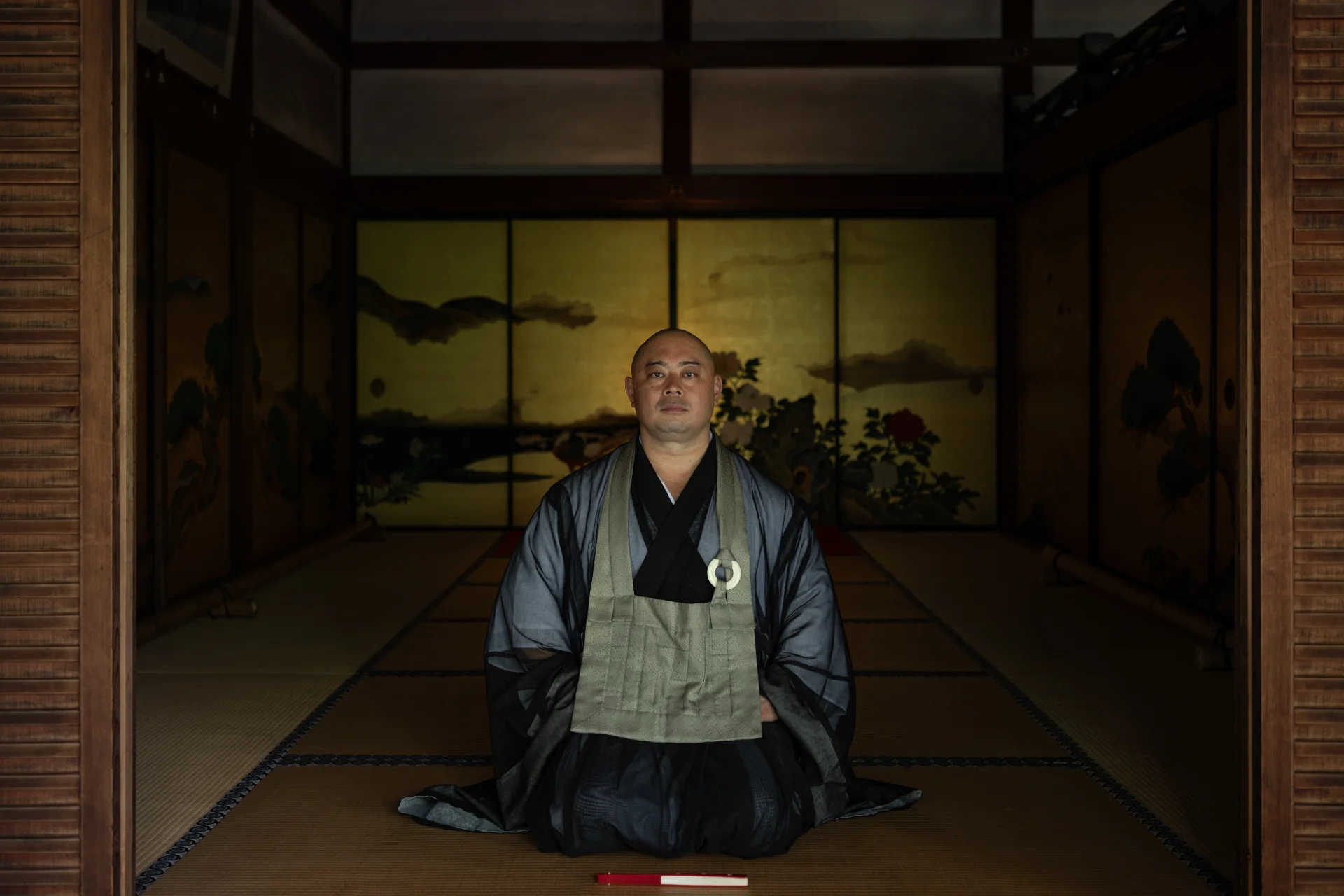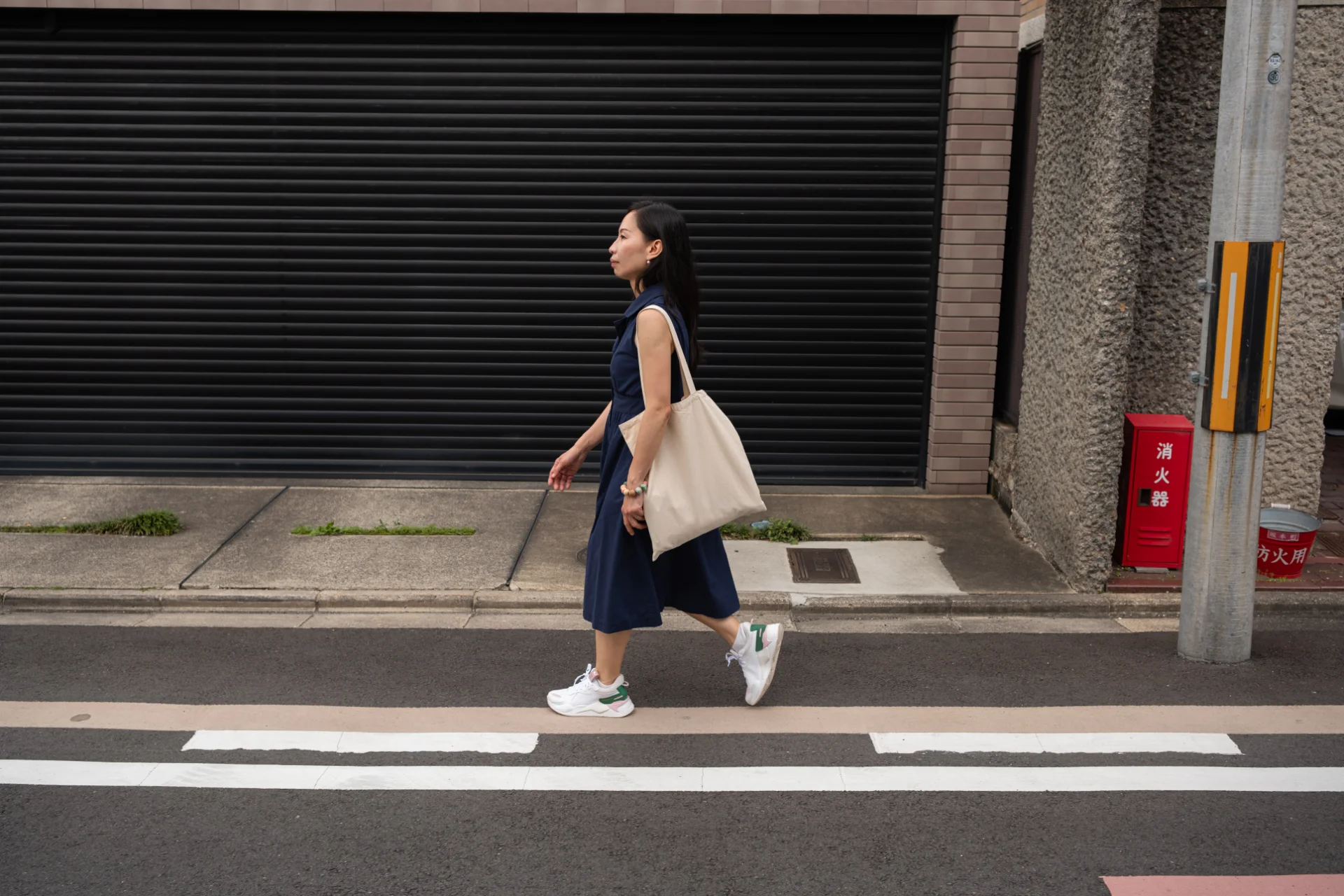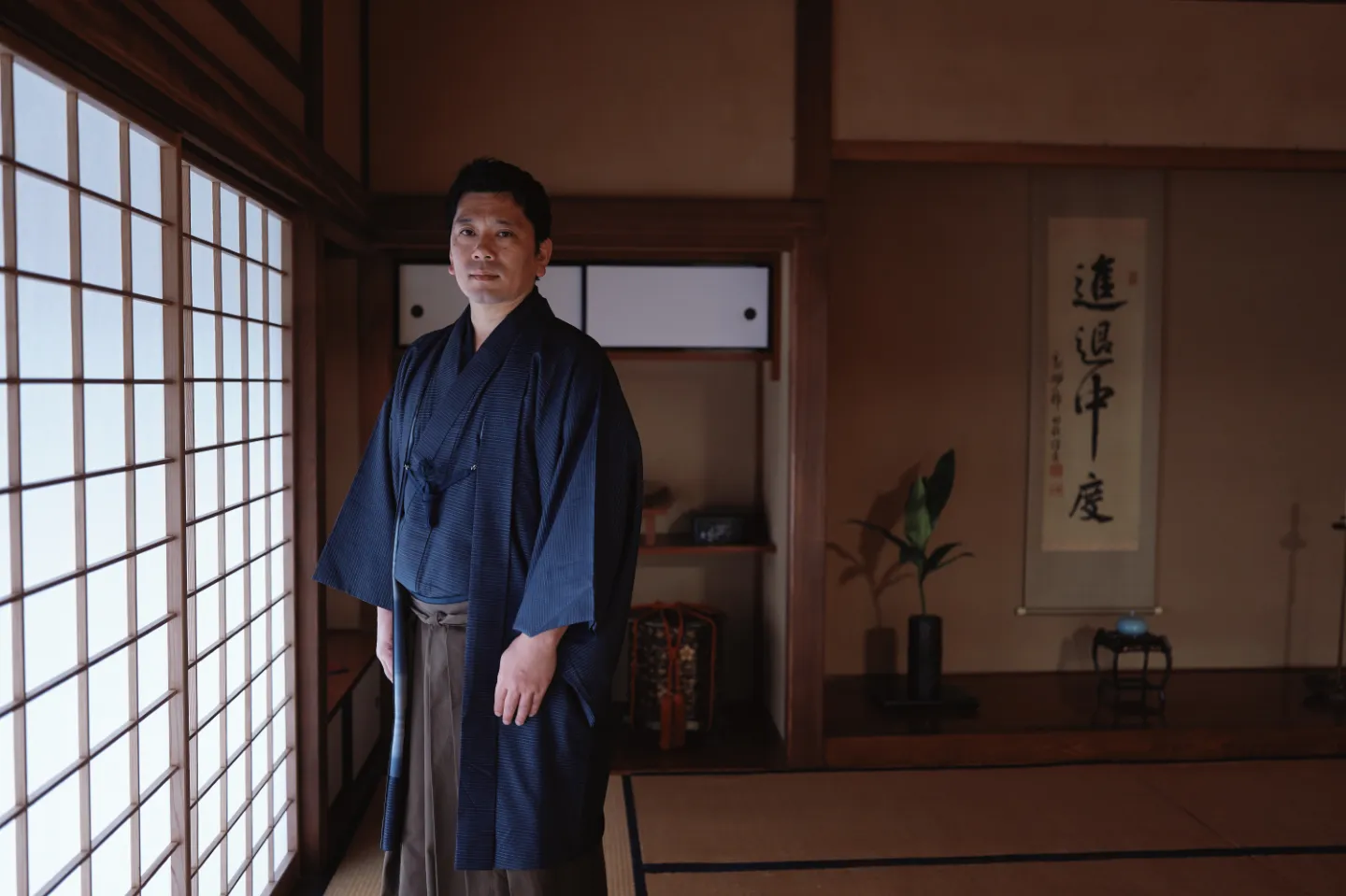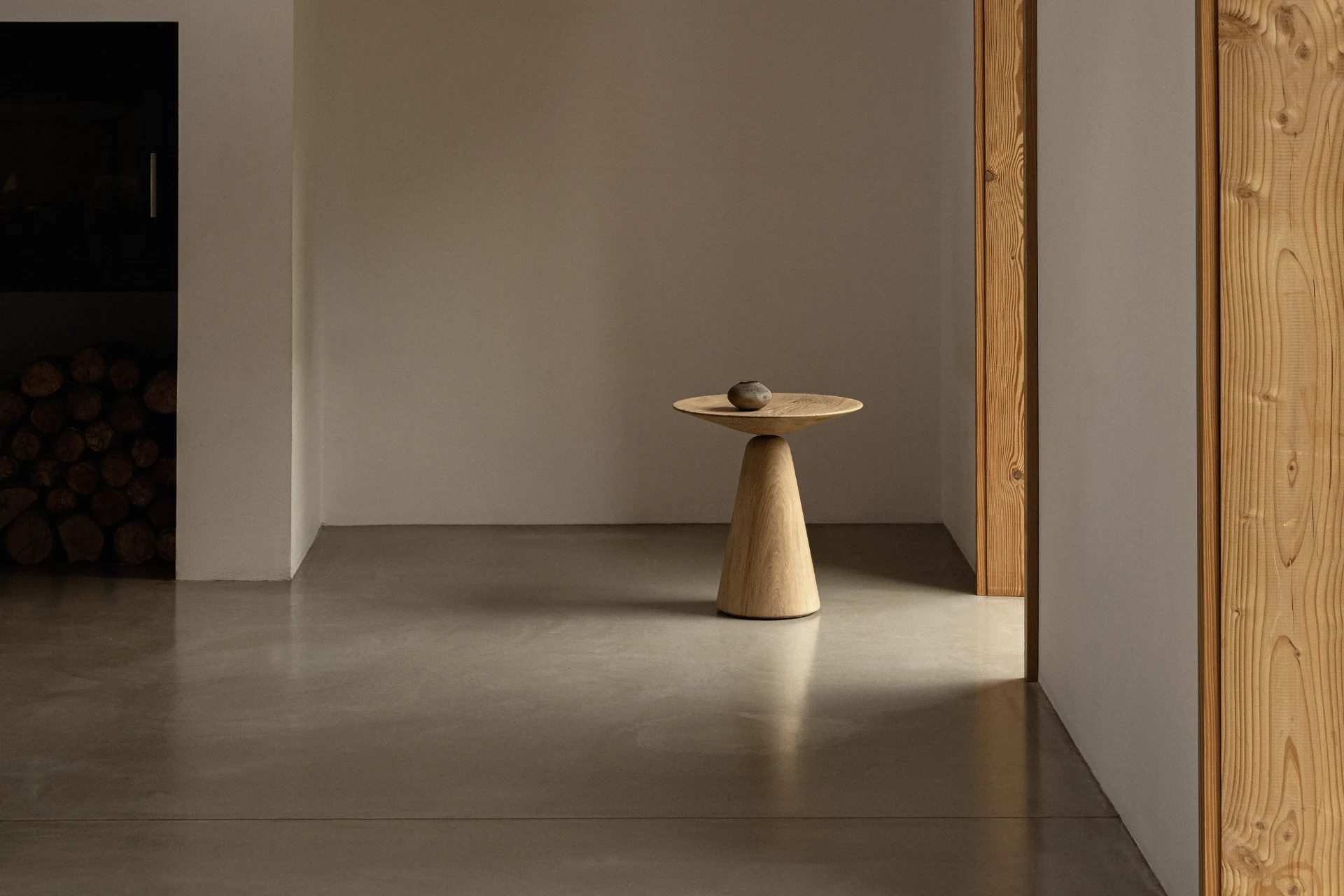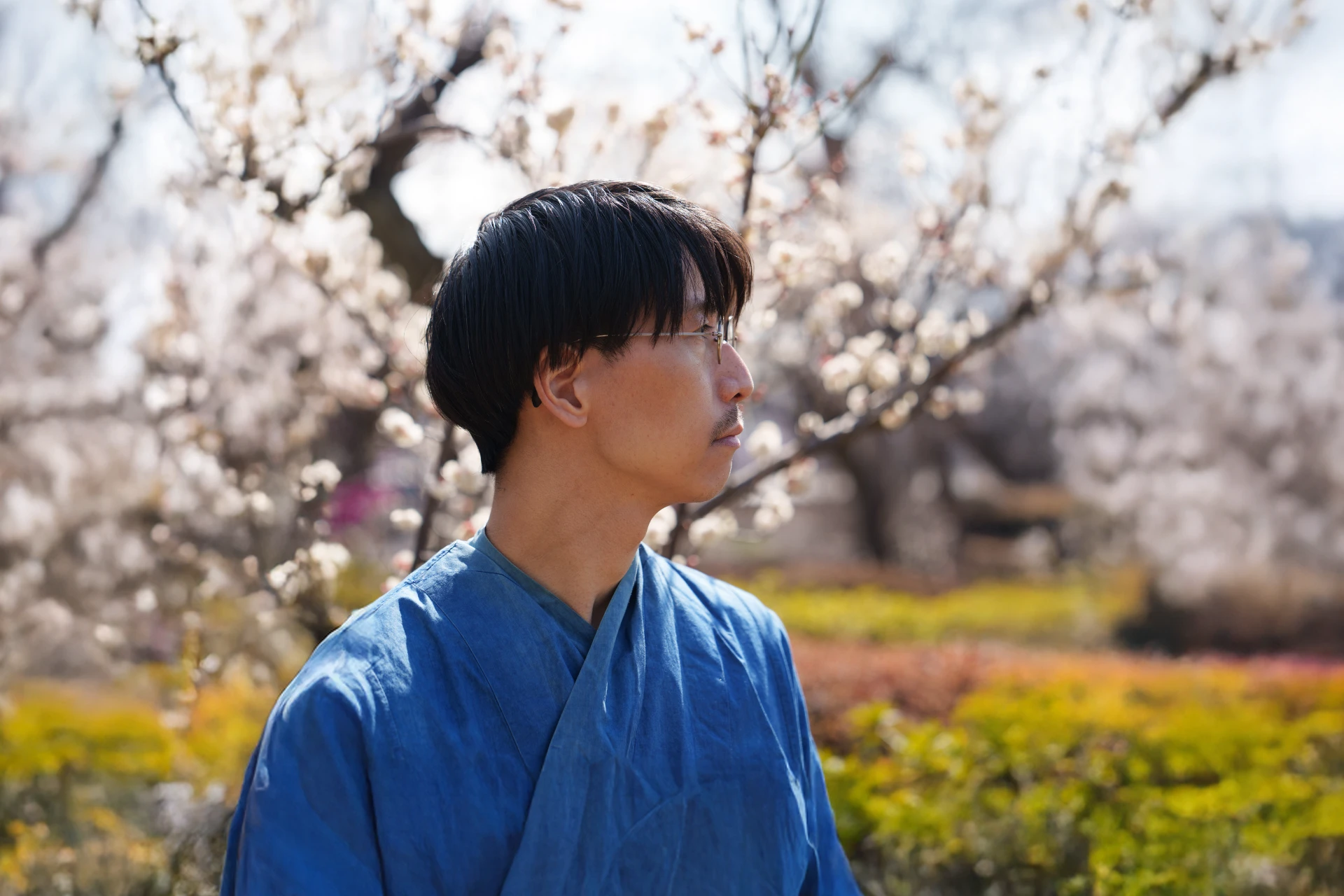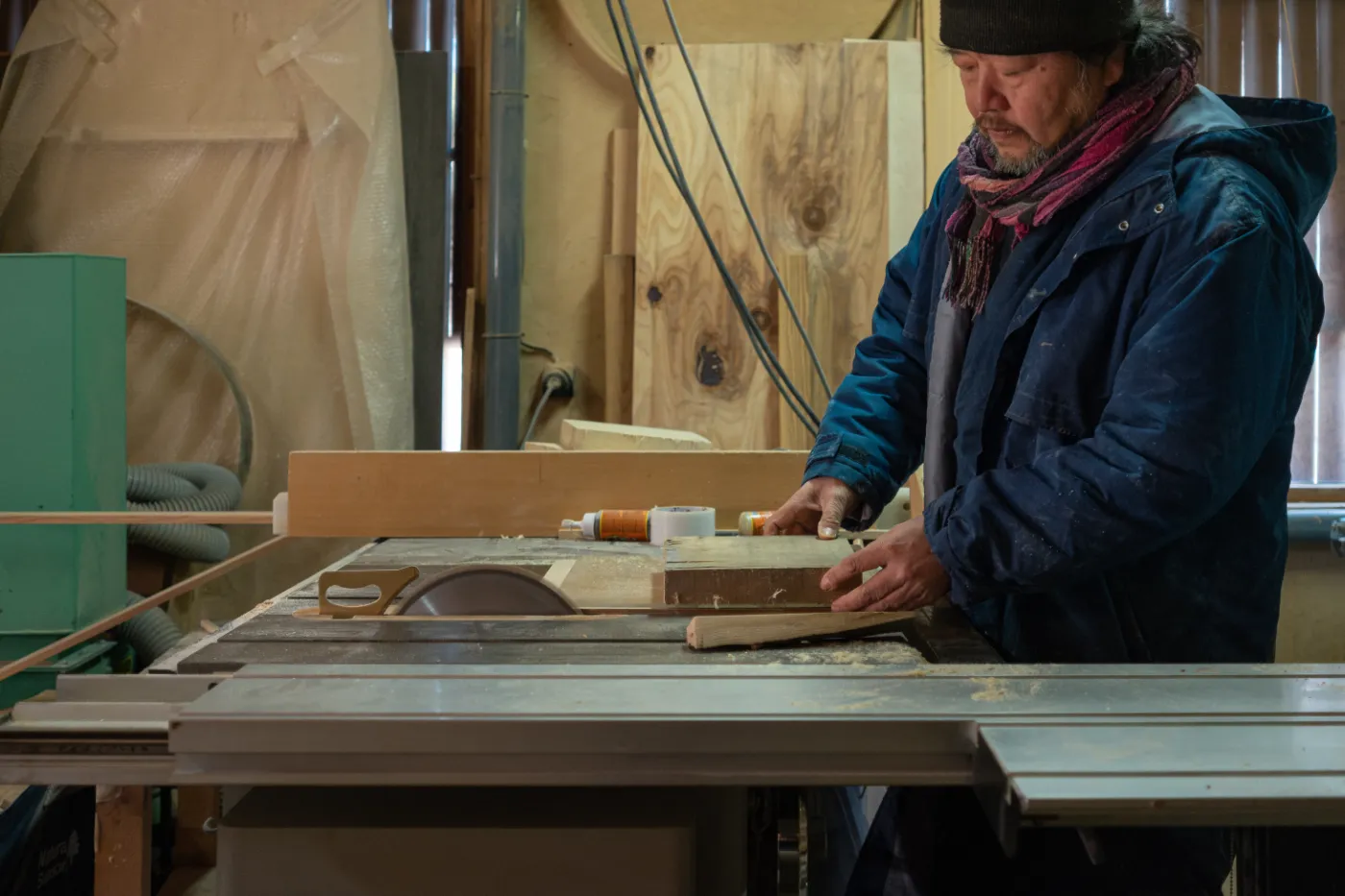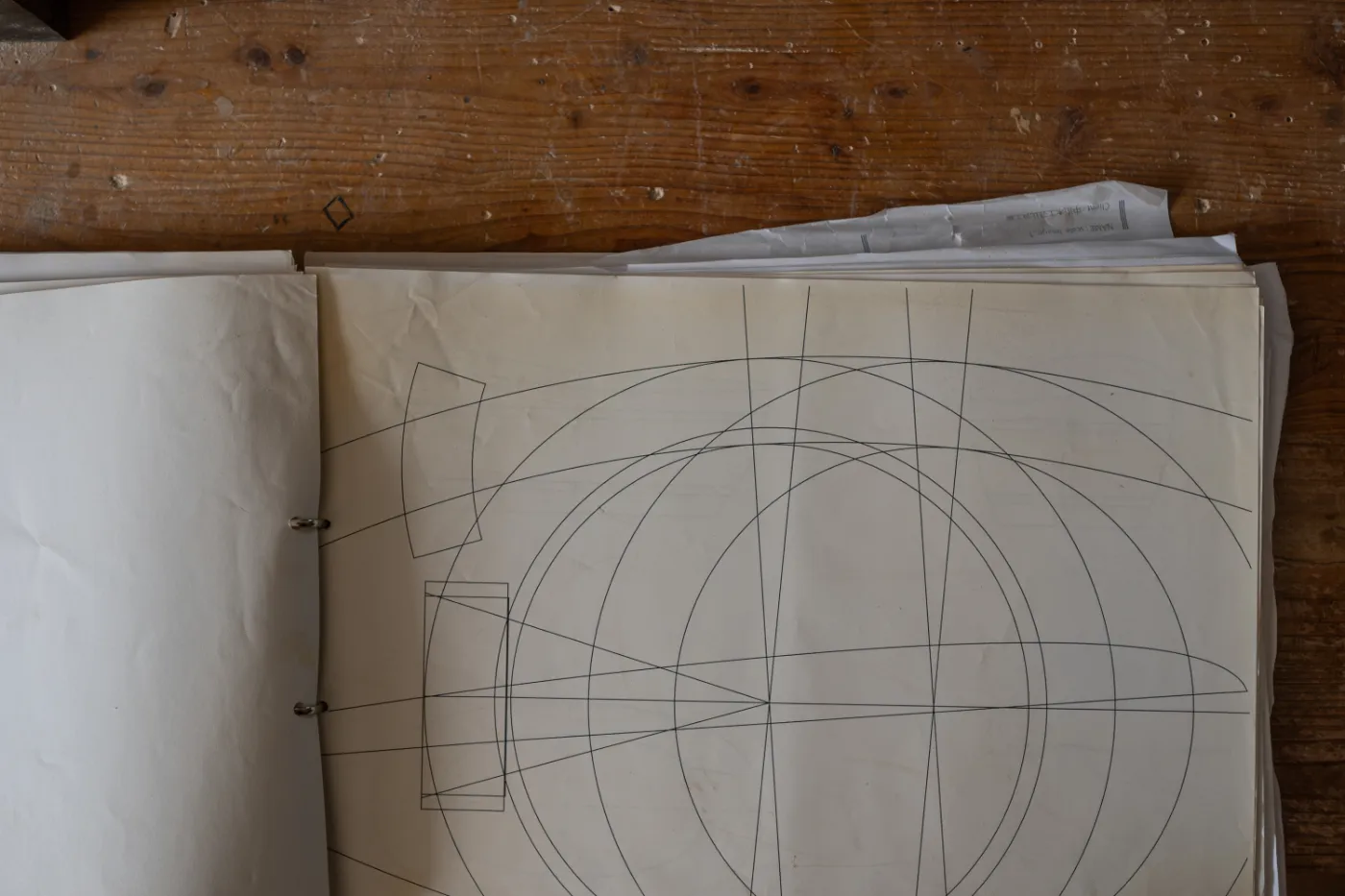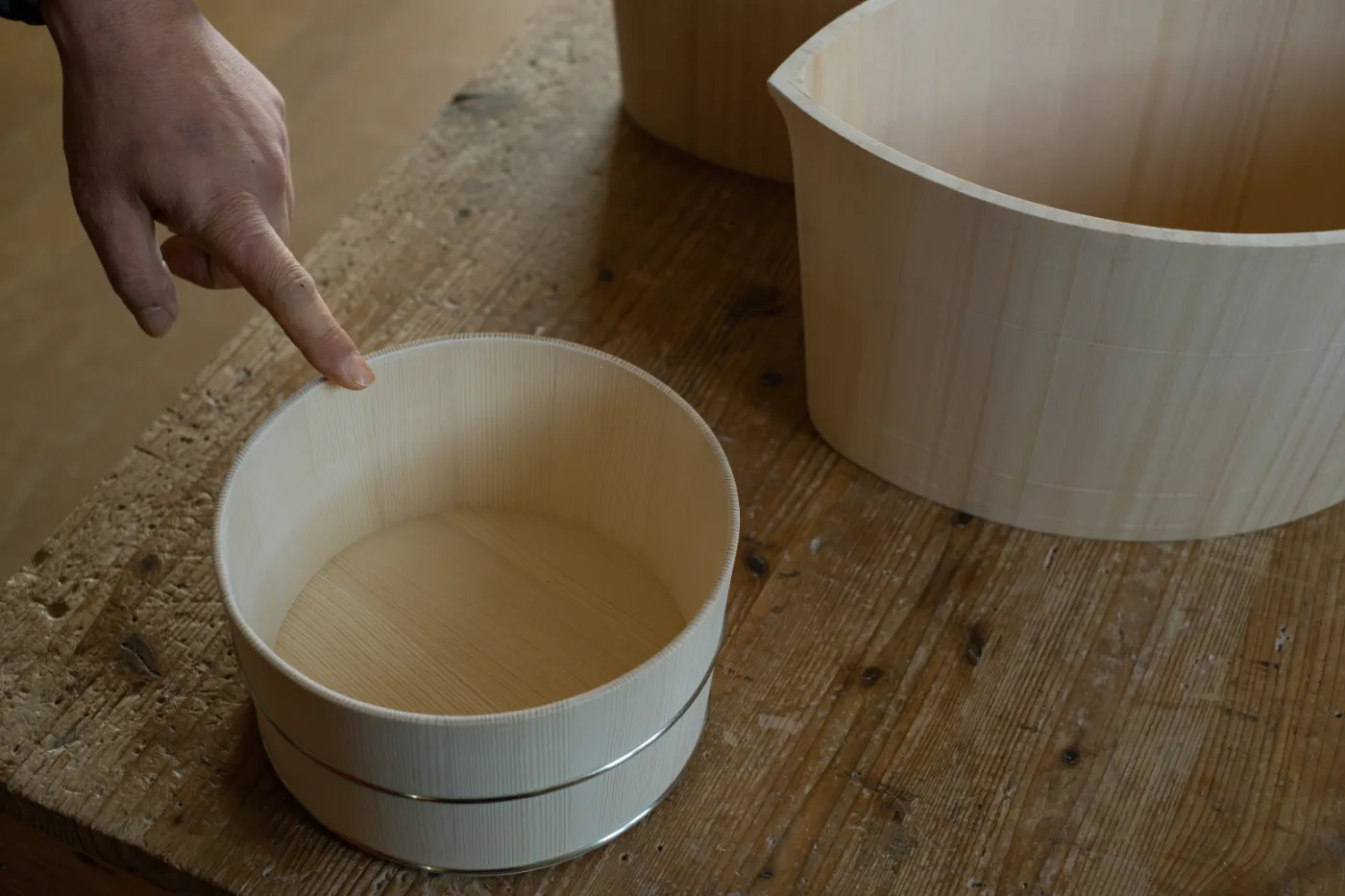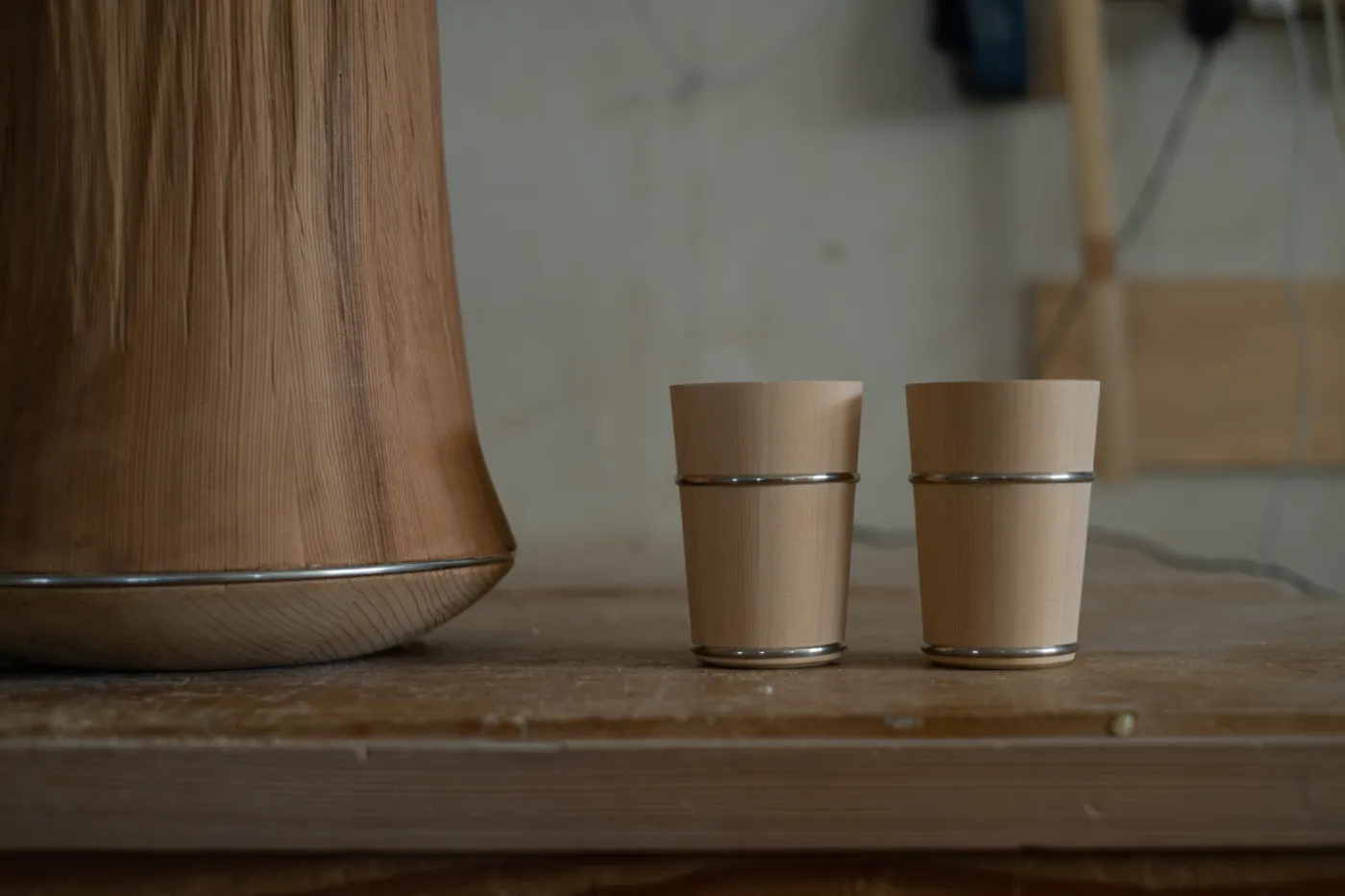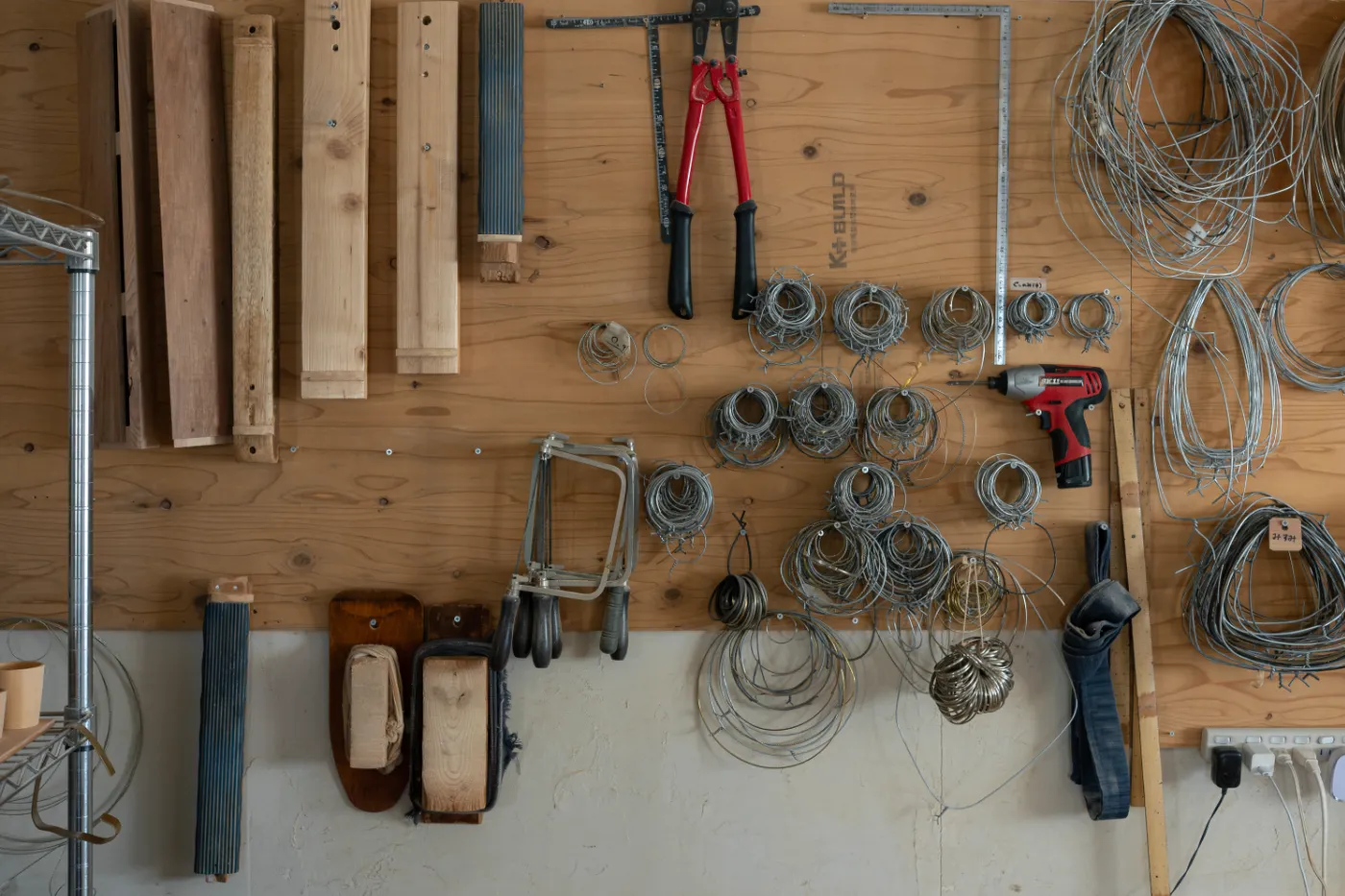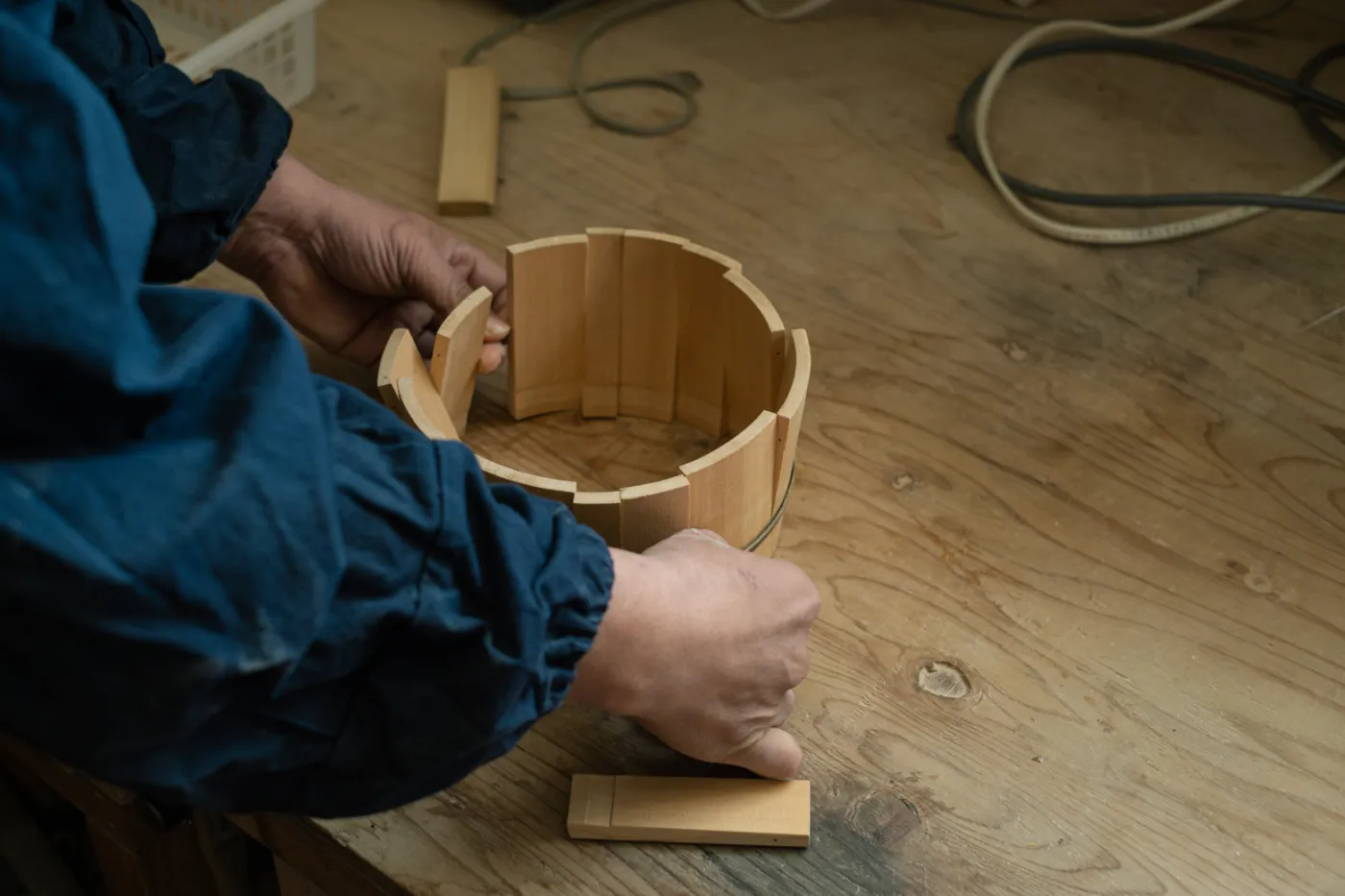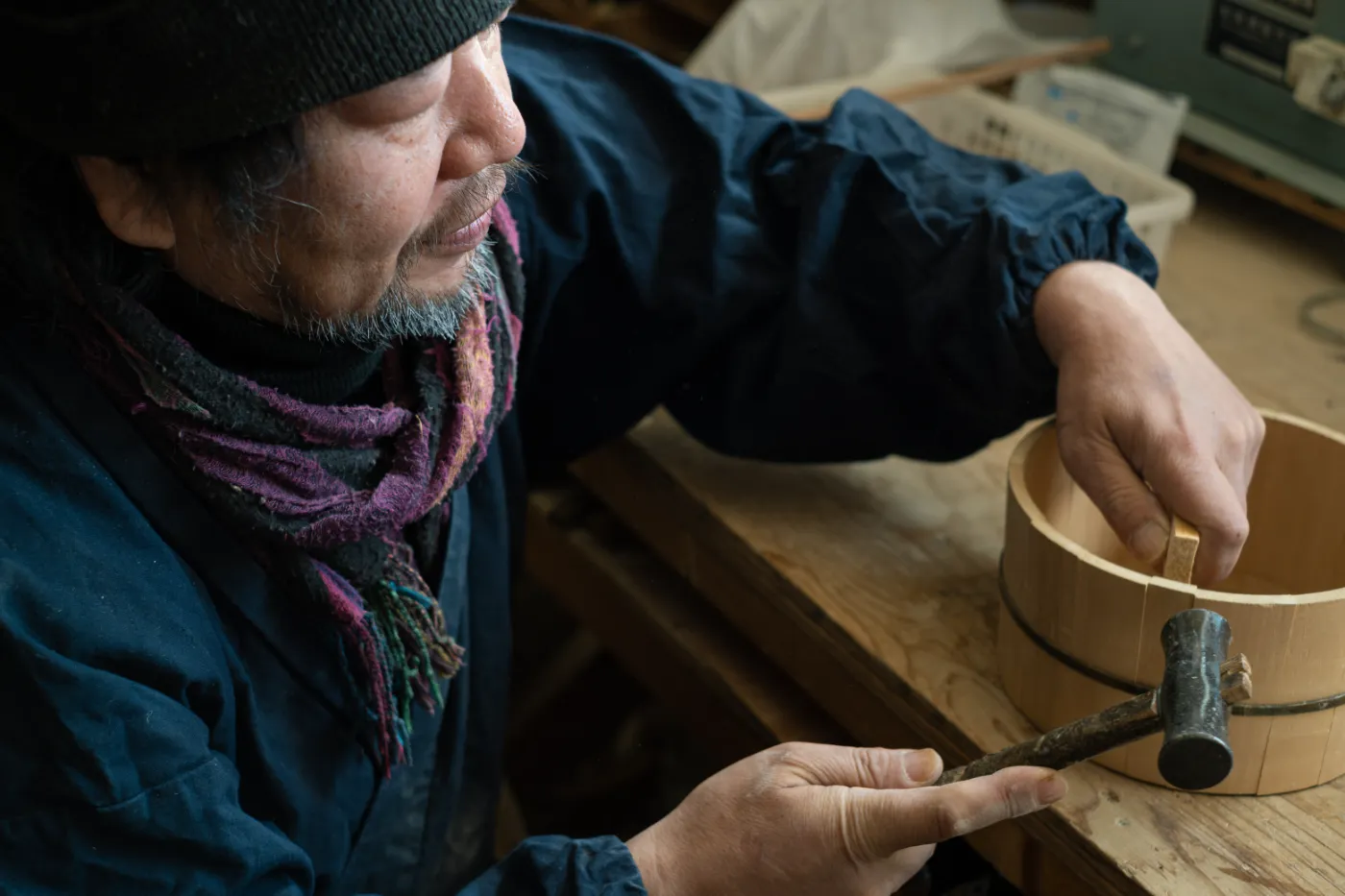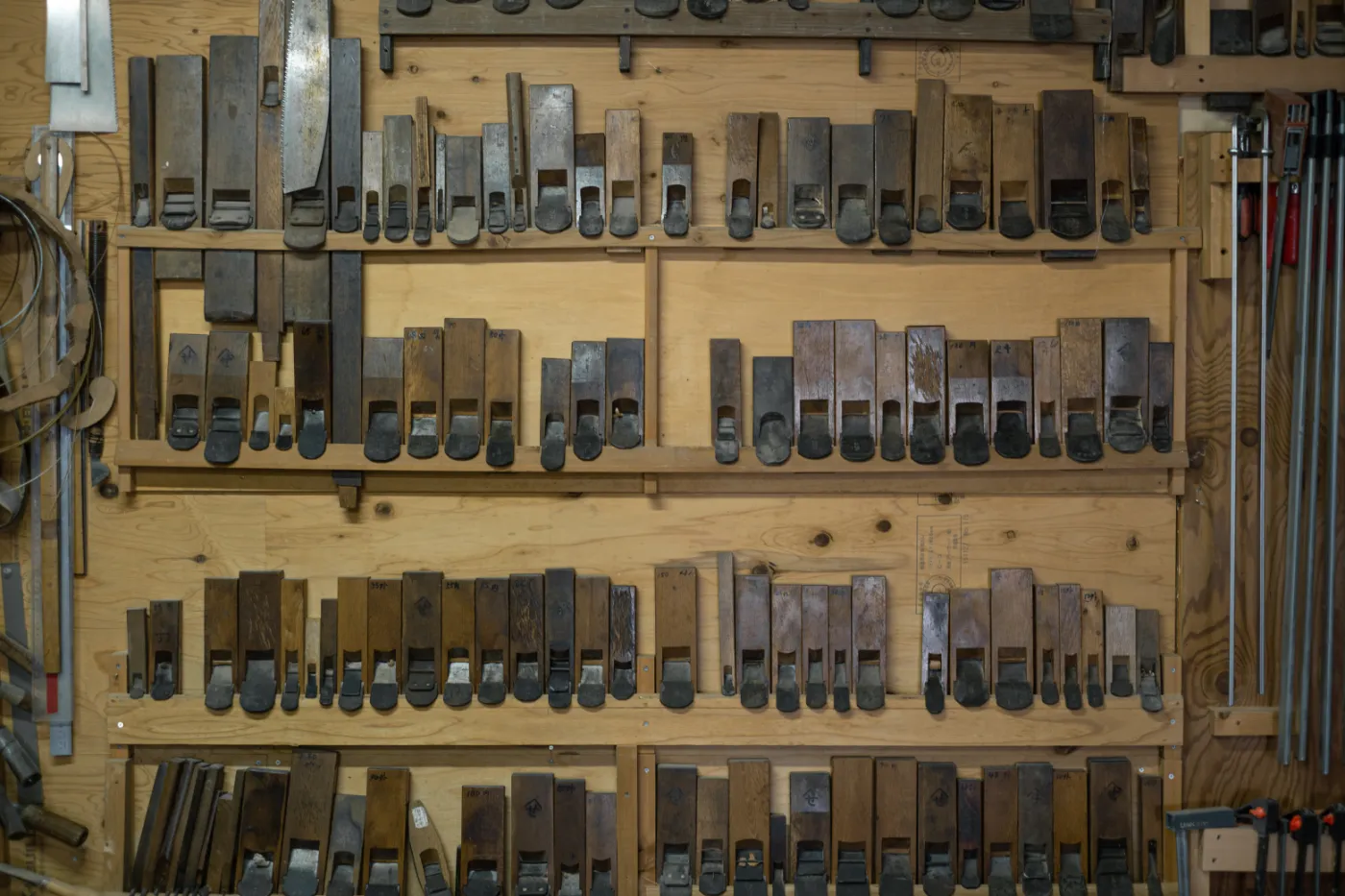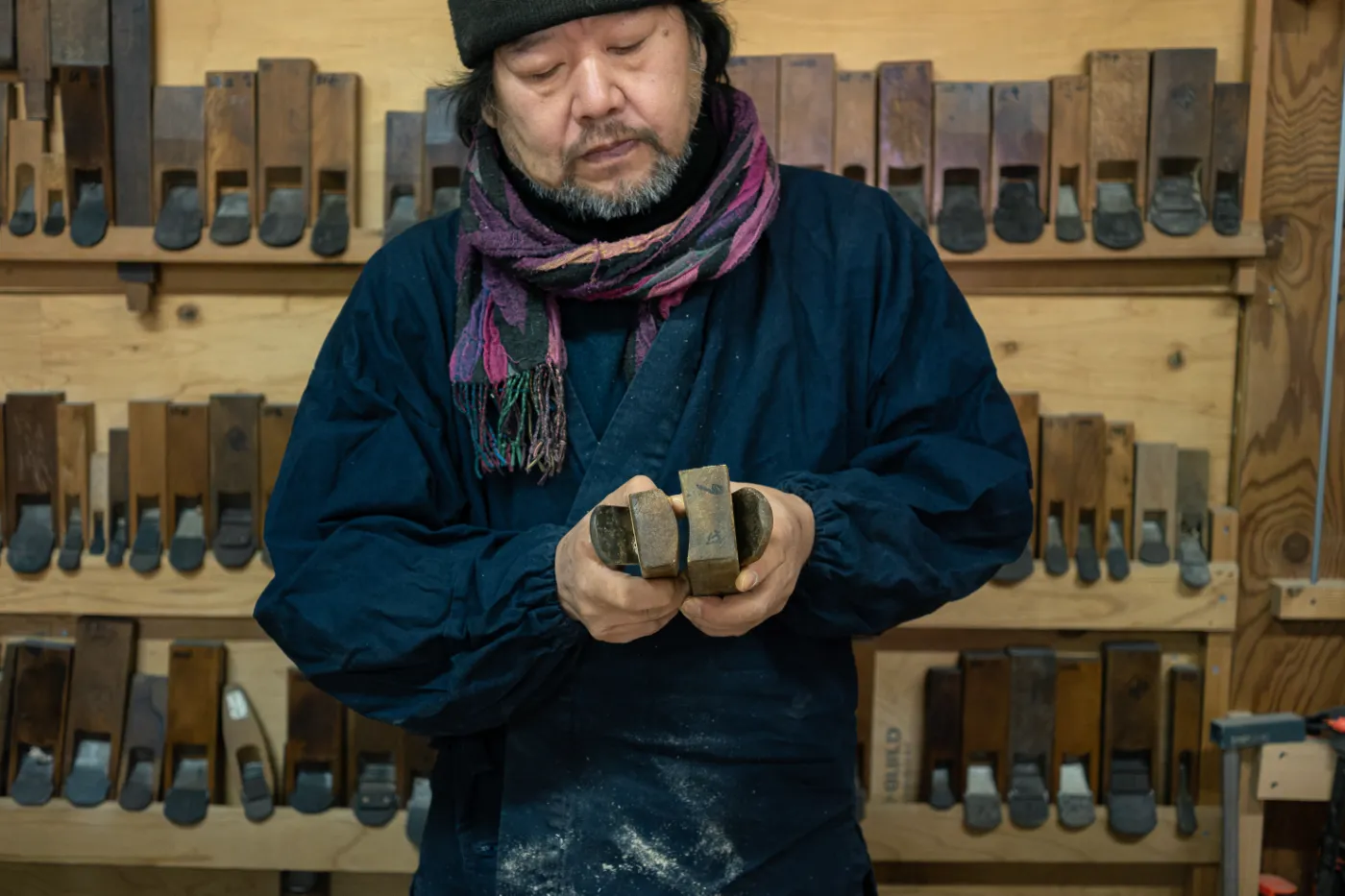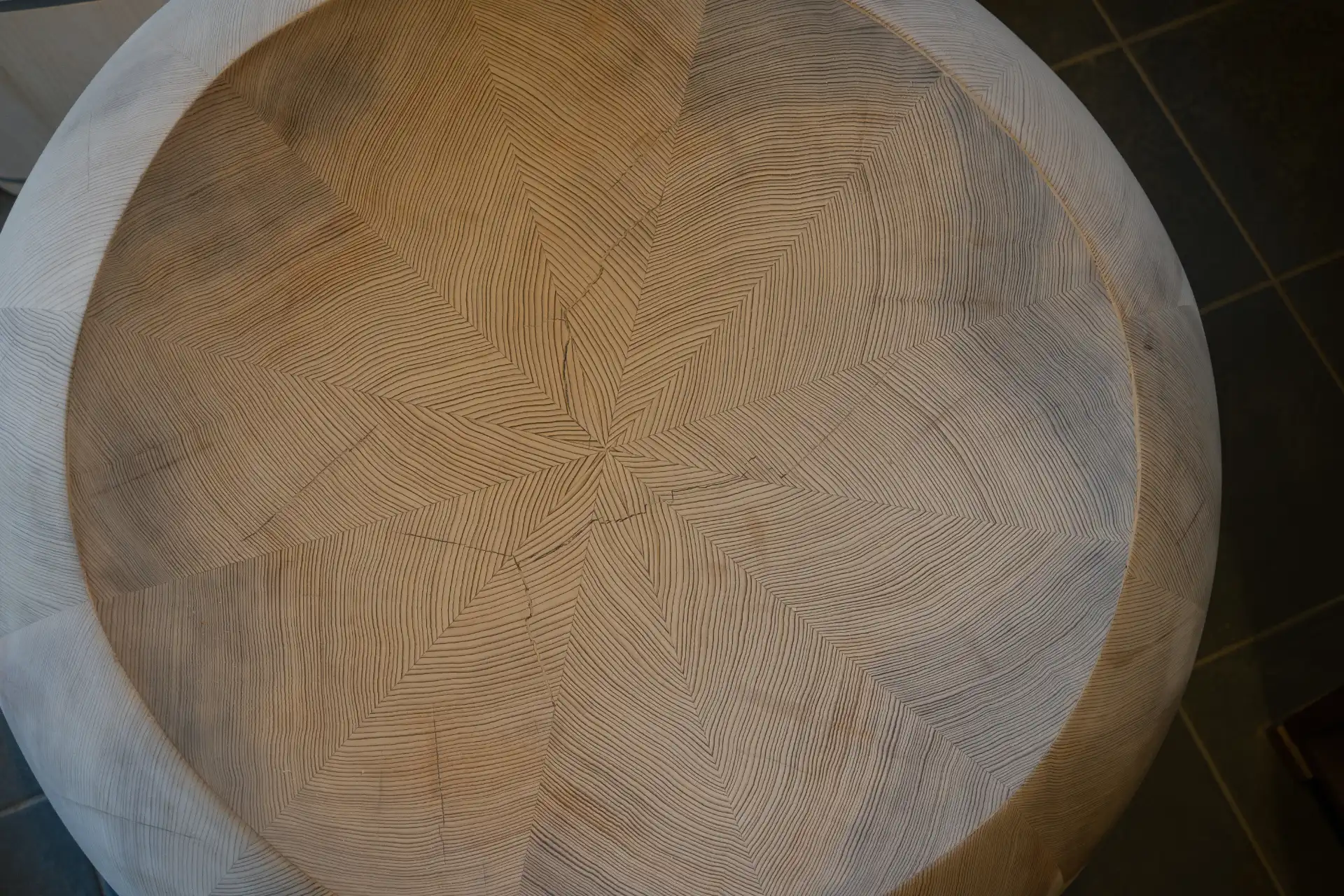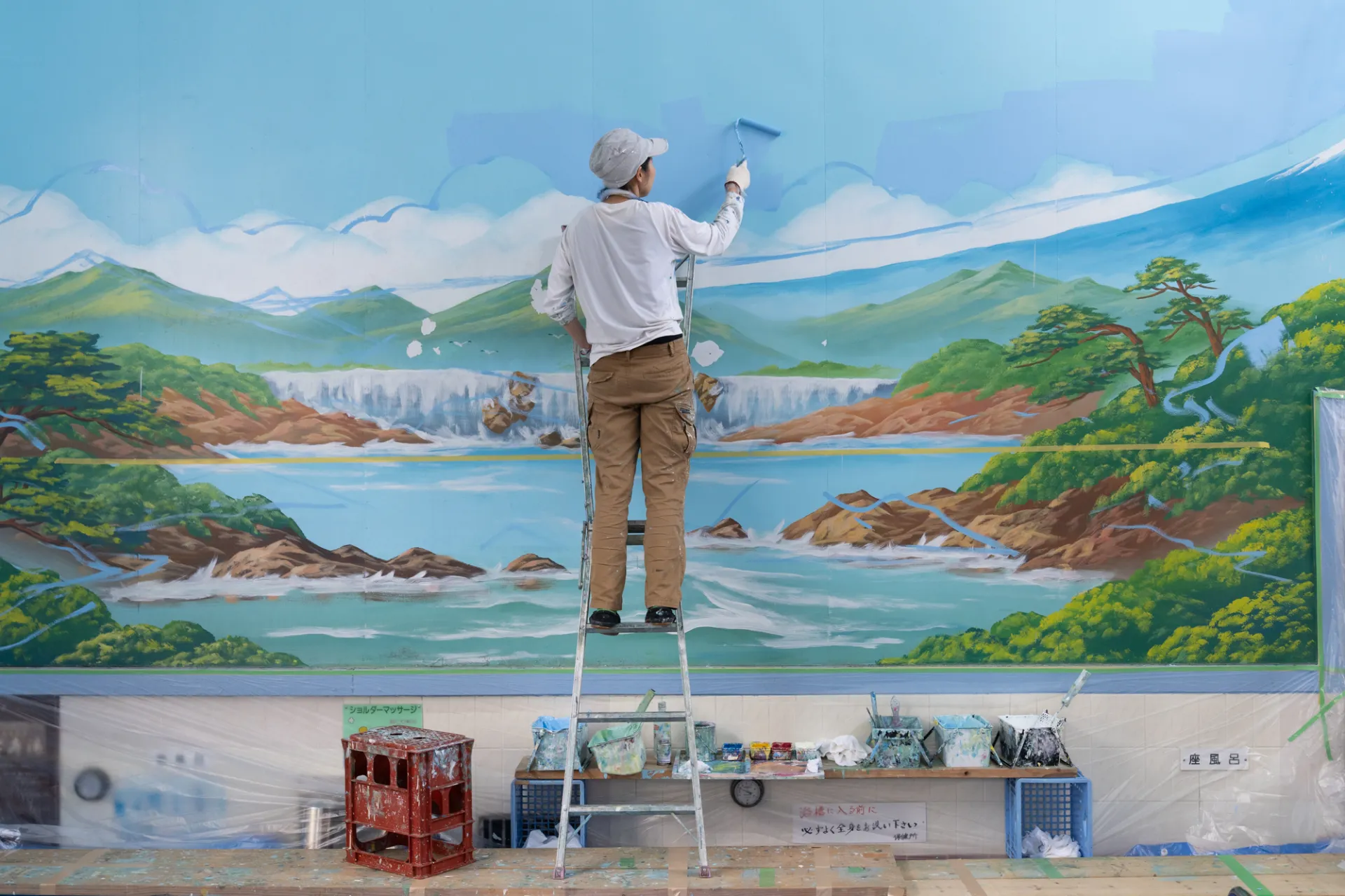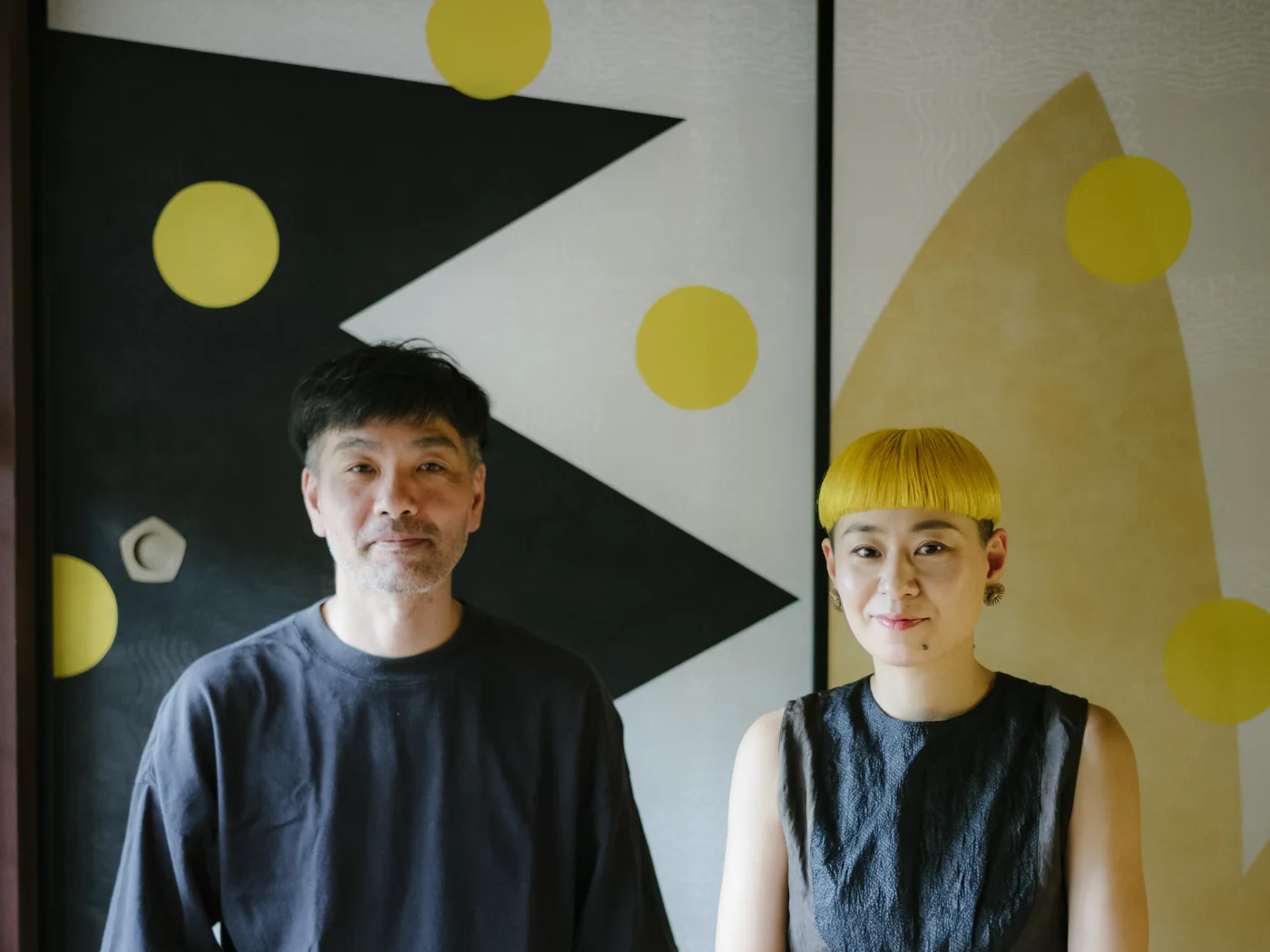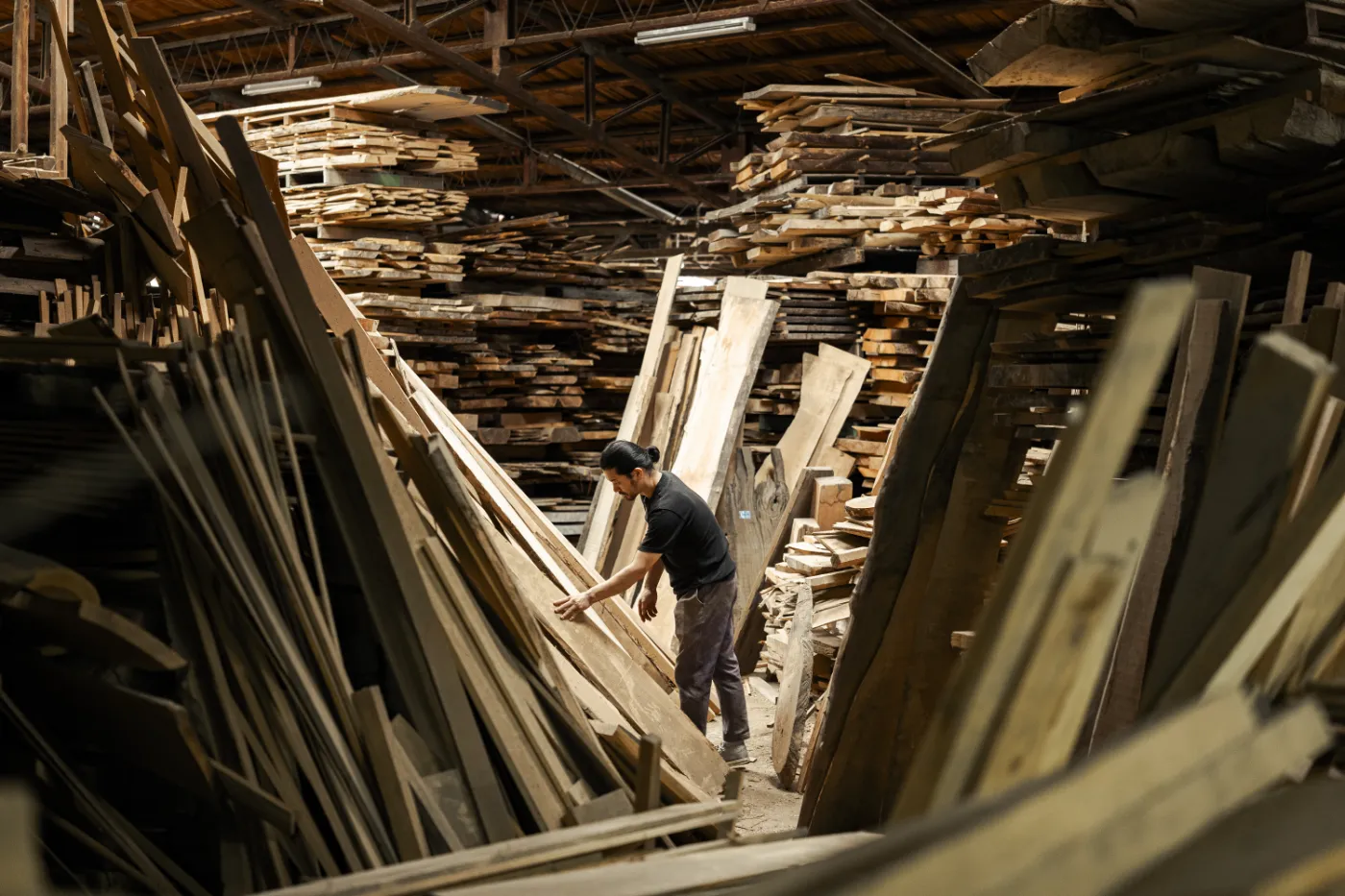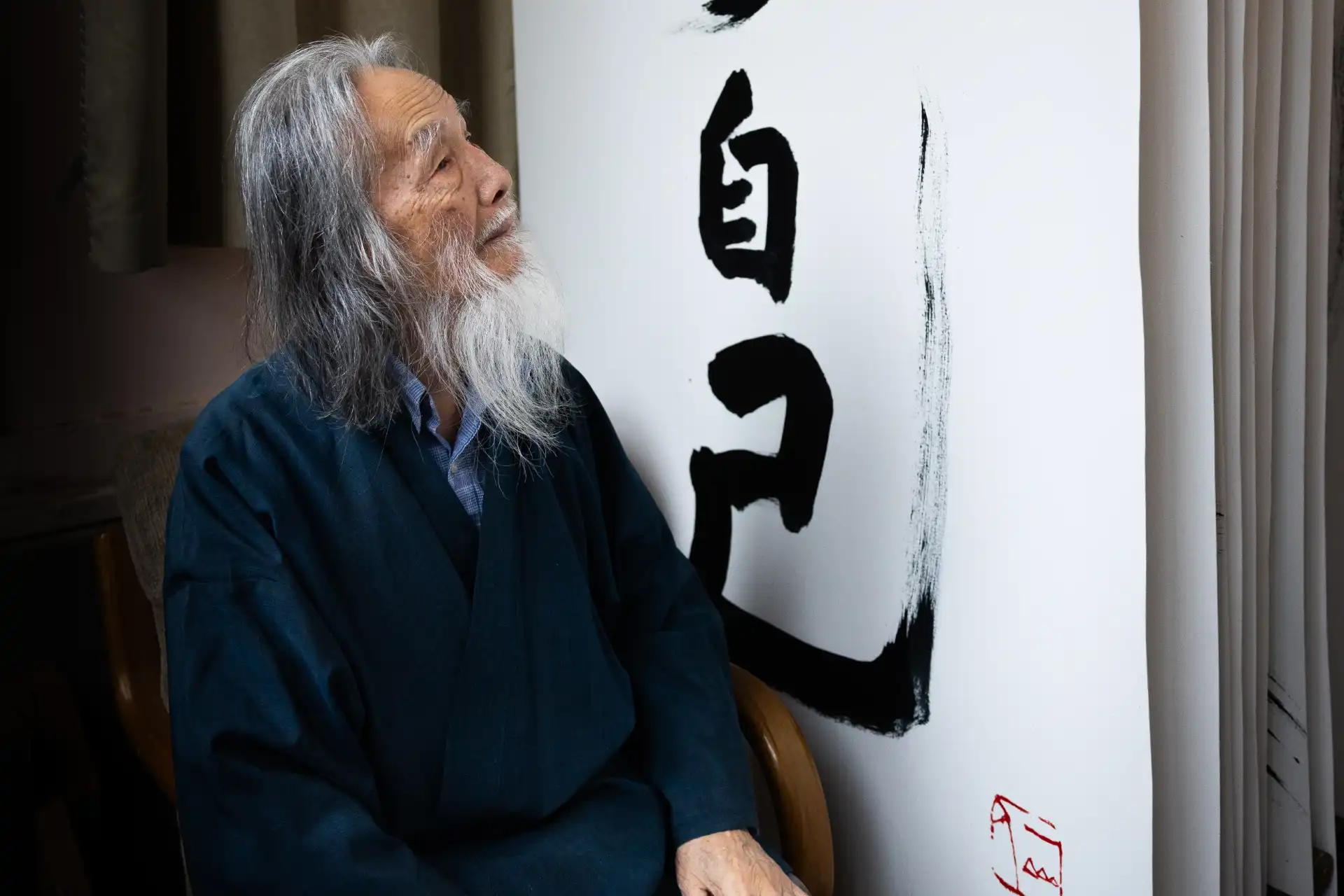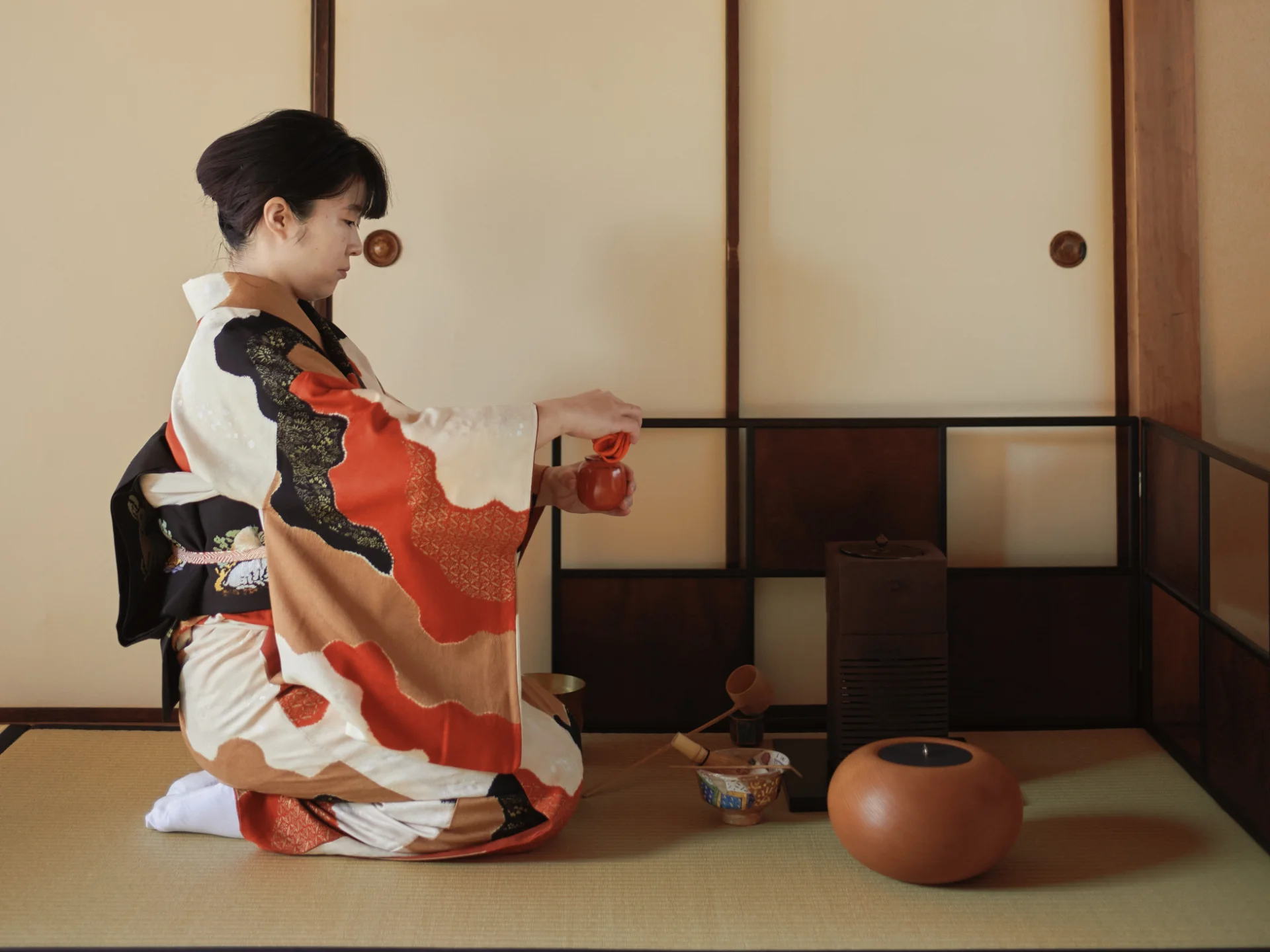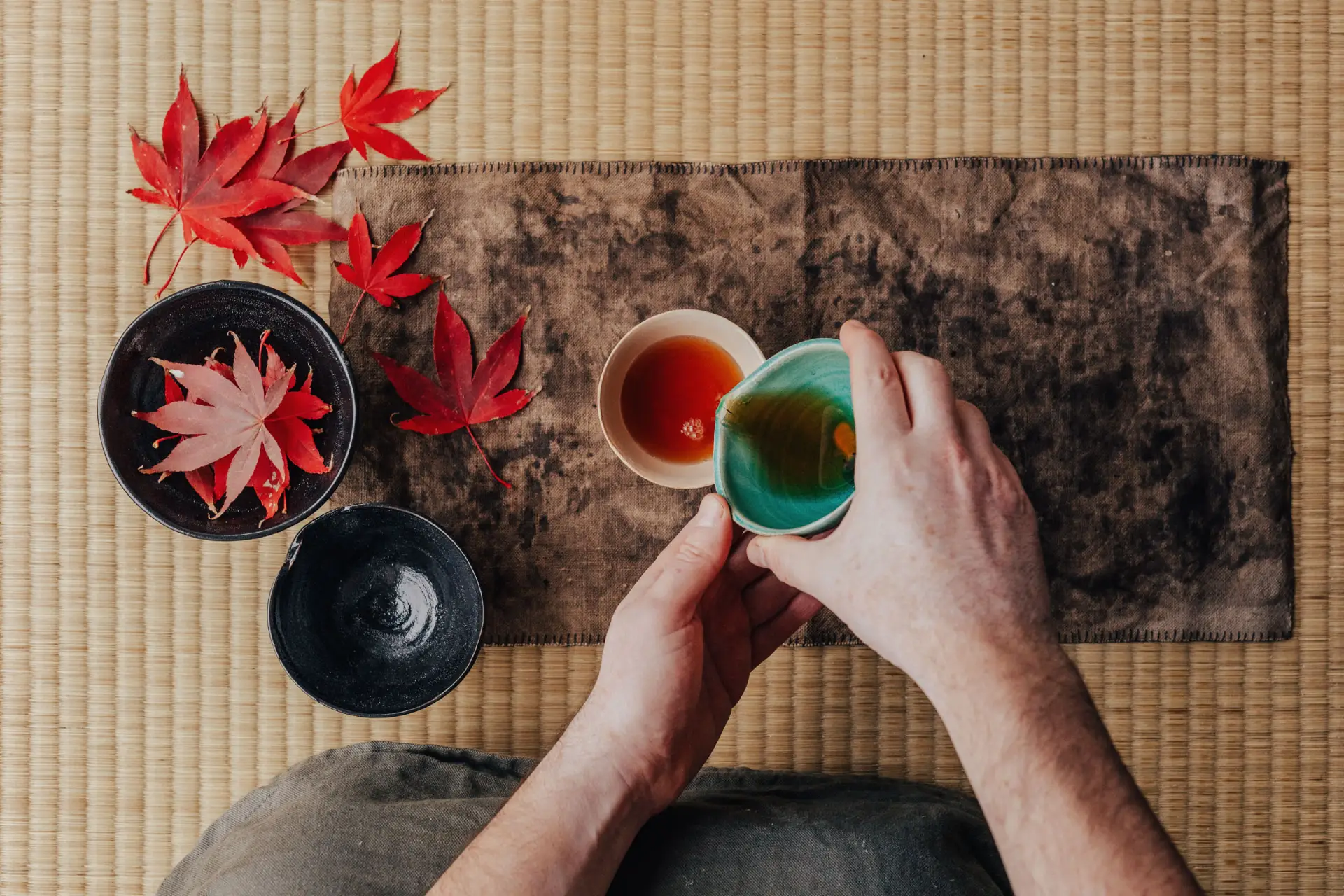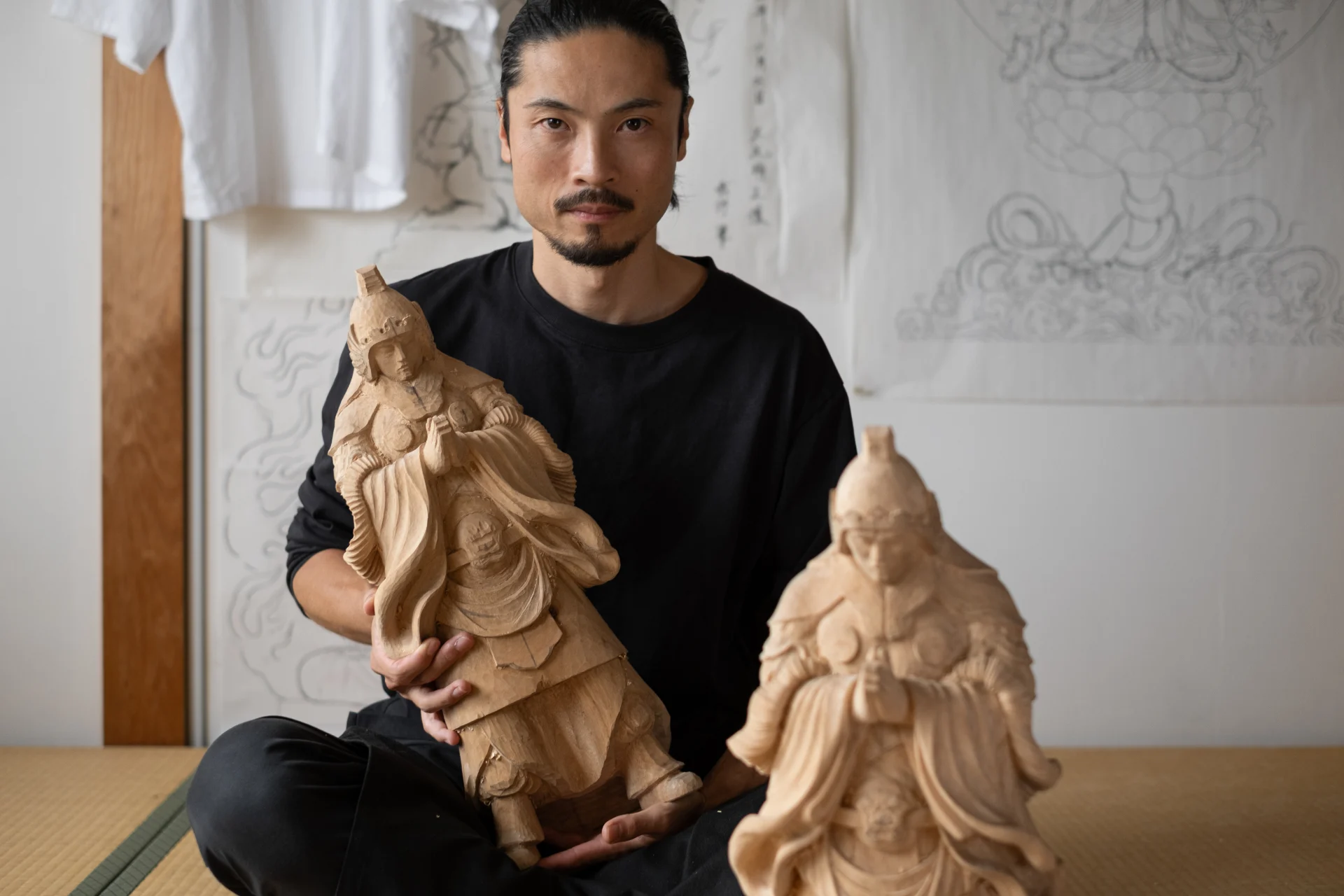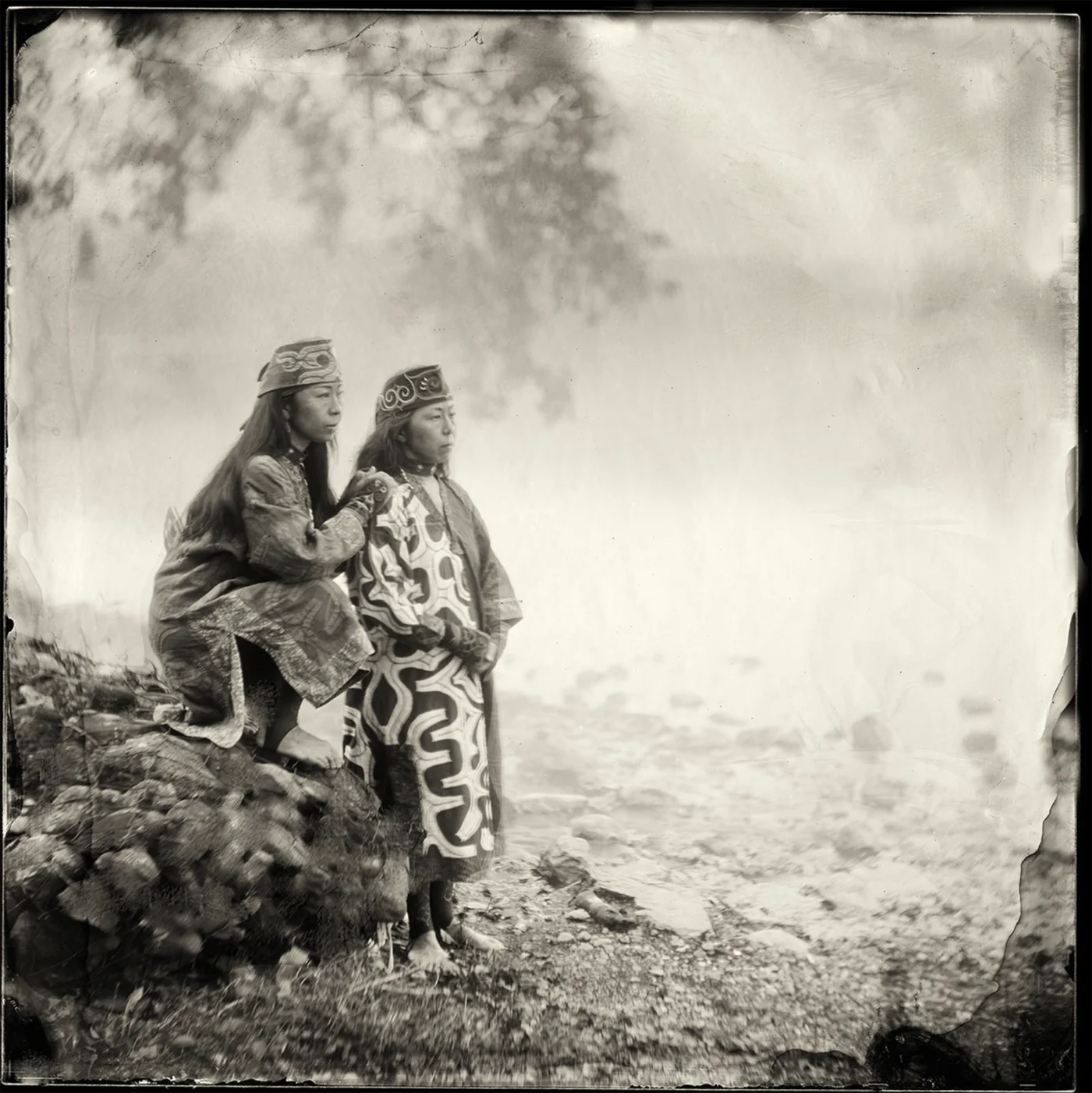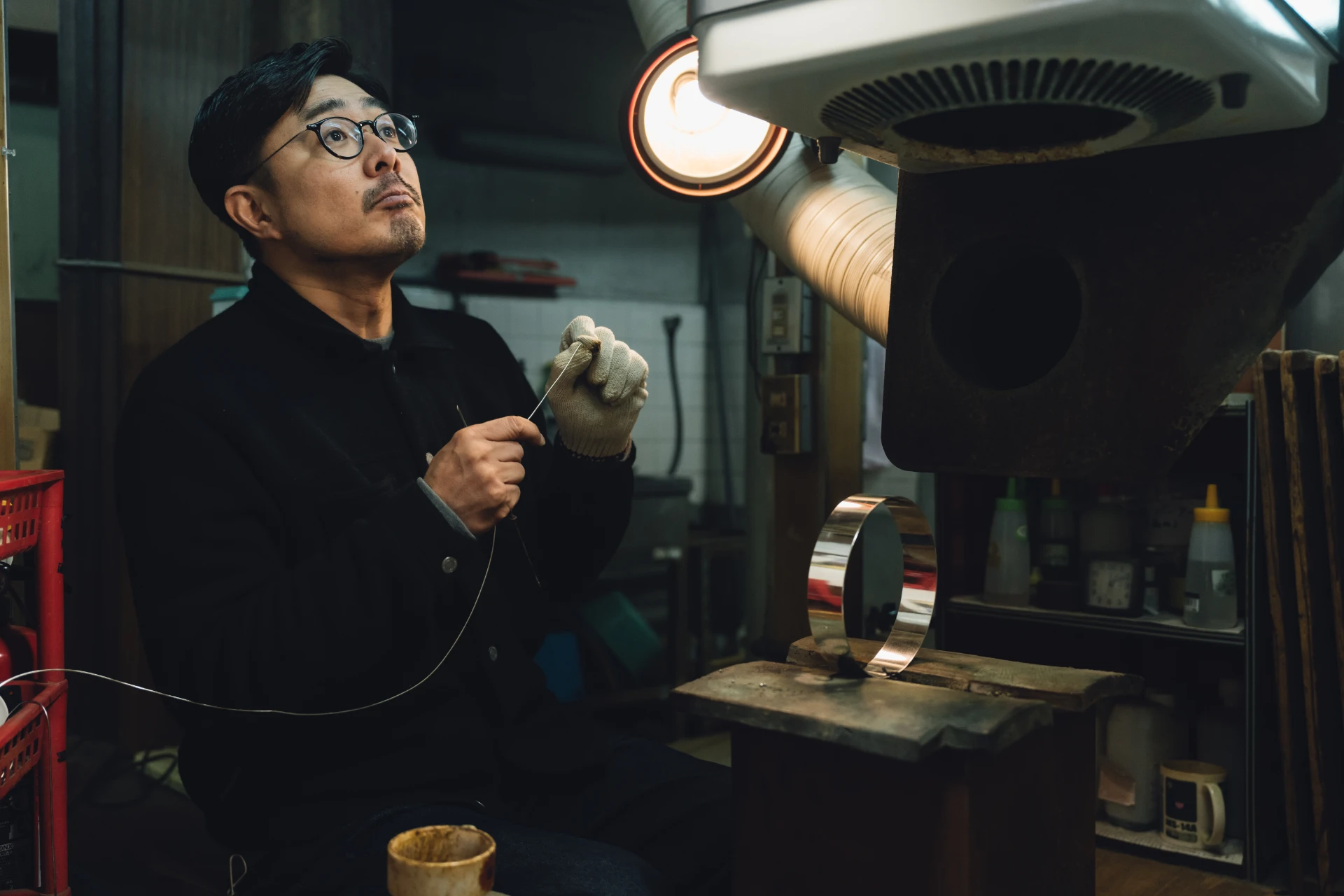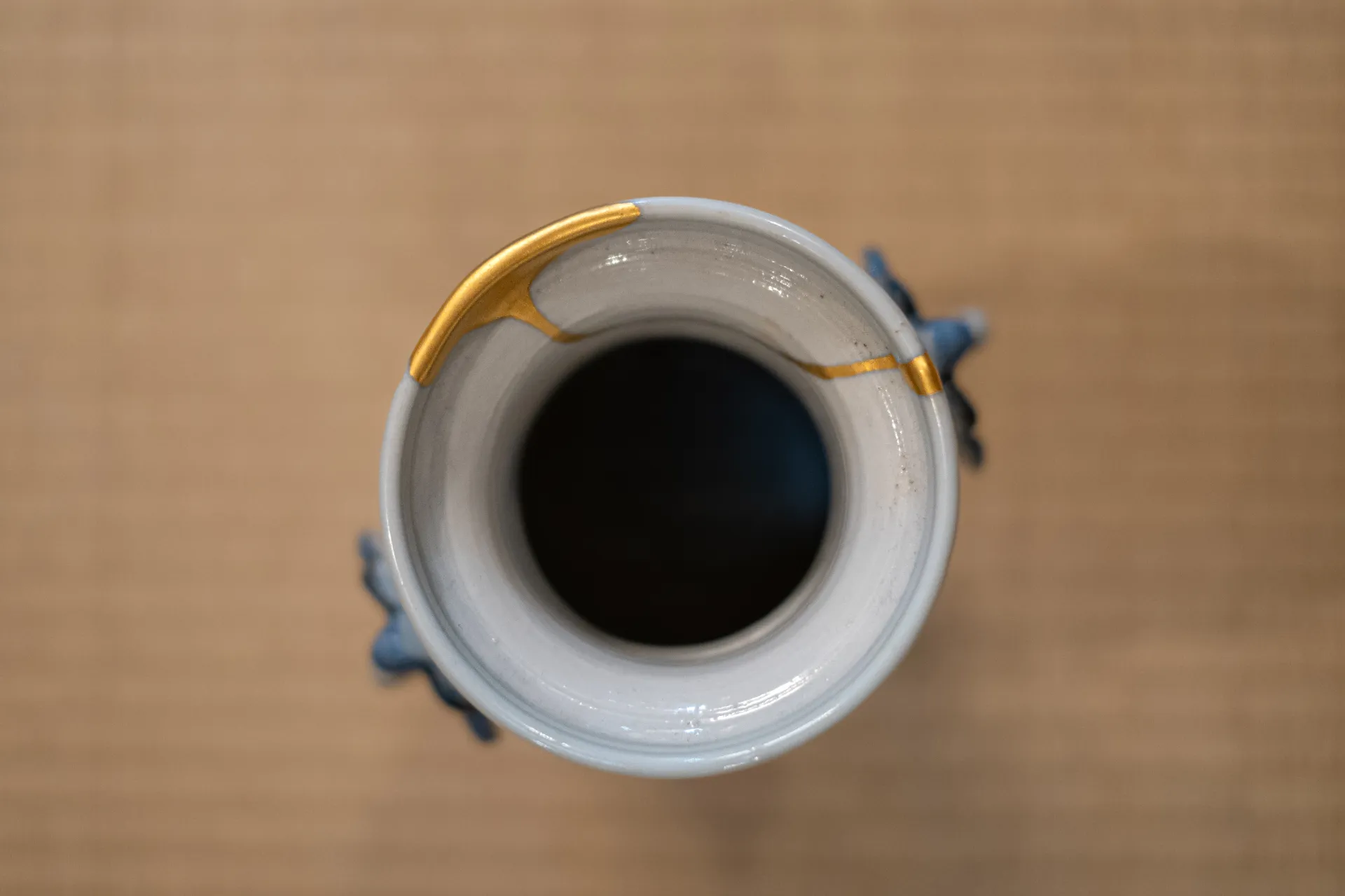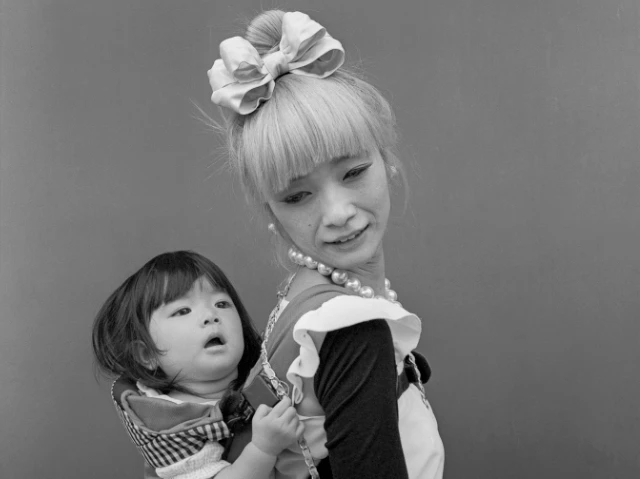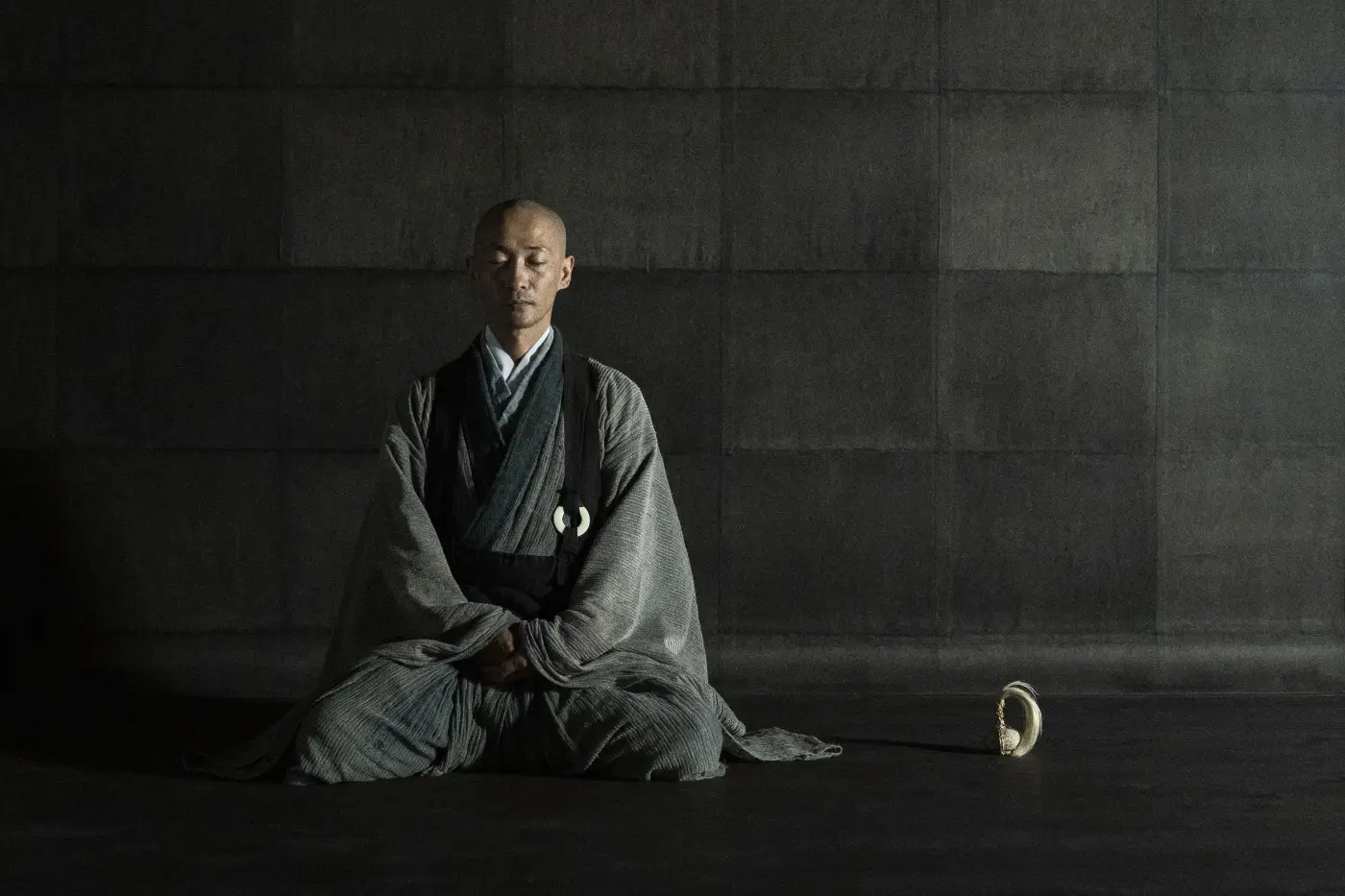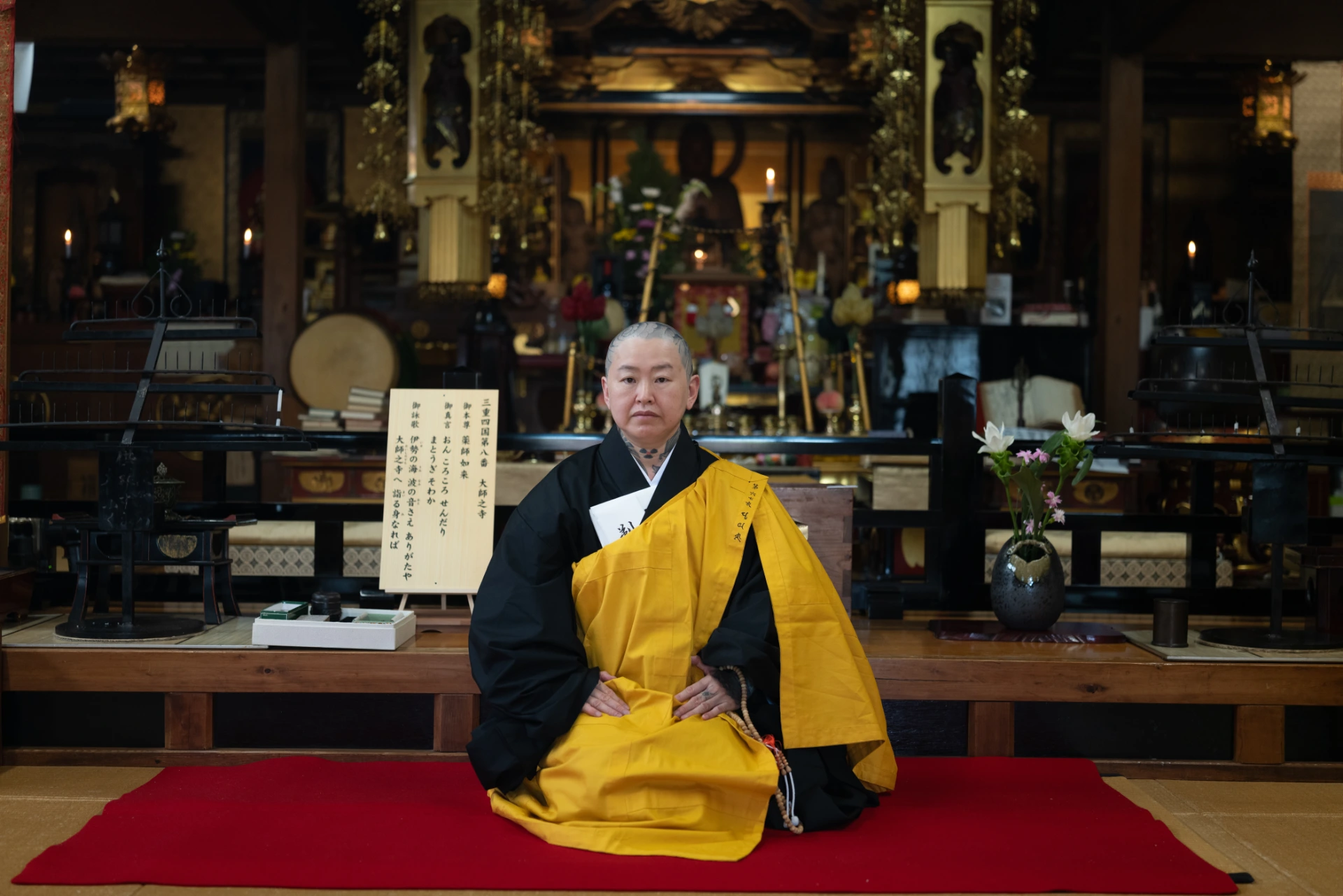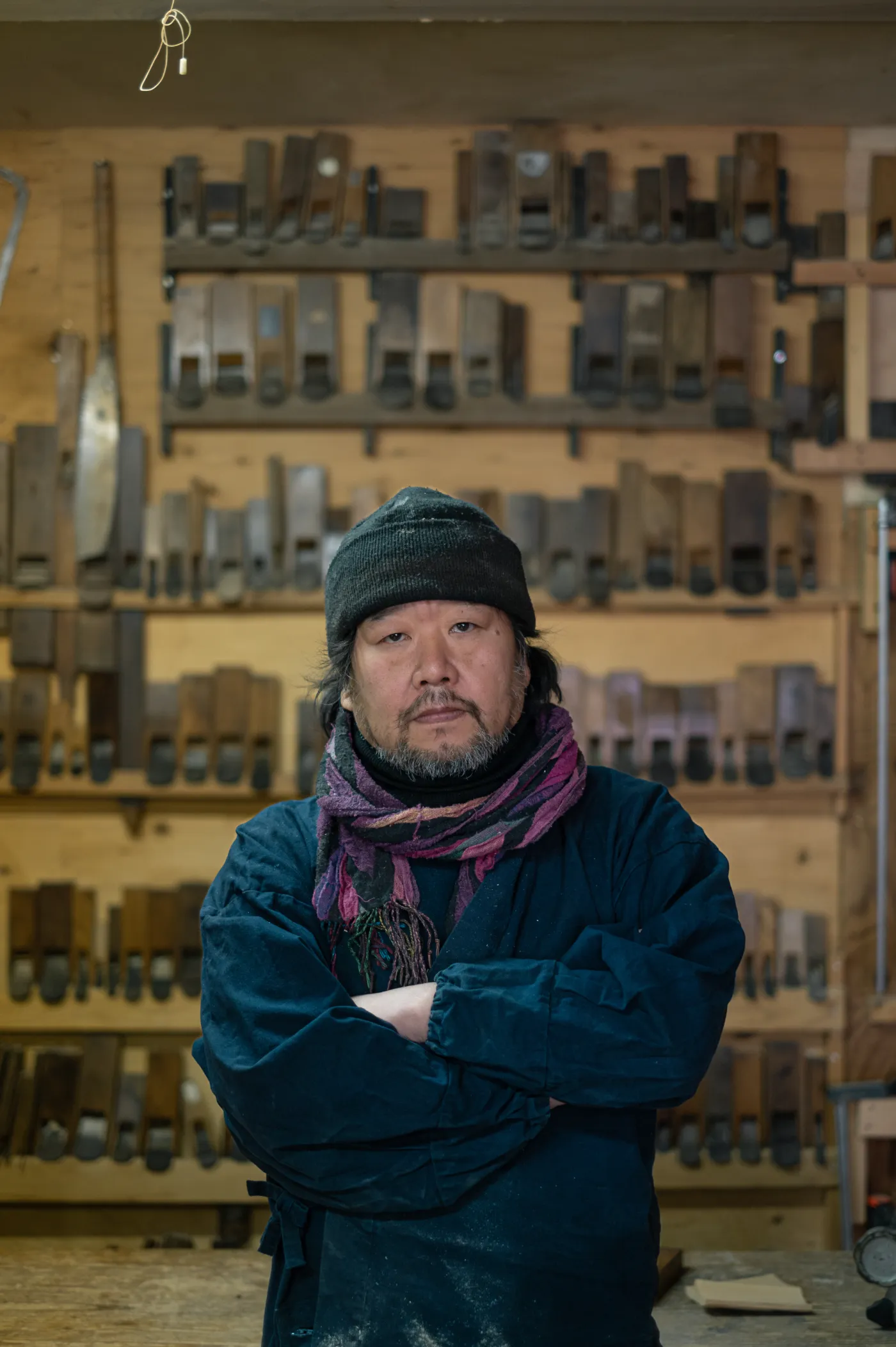
As Close As Possible
You are a third-generation craftsman and grew up watching your father and grandfather at work in the studio.
What was that experience like for you?
My grandfather, Kiichi, apprenticed in one of the major wooden tub studios since his early teens. After completing his apprenticeship, he set up his own workshop in Kyoto.
As a child, I watched my grandfather with admiration. I would watch him shave wood with his plane and still remember the way shaved wood flew away, the trajectory of it. It was beautiful. I still keep that vision as something to aim for.
My father followed in his footsteps and eventually became recognized as a ‘Living National Treasure,’ the highest recognition for one’s technique as a craftsman. I learned the techniques from him.
I admire my grandfather as a craftsman, and I aspire to be as close as possible technically to my father.
Many craftspeople in Japan, especially of the older generations, continue working until the last day of their lives, but not your grandfather, right?
That’s right, my grandfather retired when I was in junior high school. “I’m retiring,” he said one day and stopped working. He retired at the age of 65 and moved to the countryside. But he couldn’t stay there too long and returned to Kyoto after a few years.
In our workshop, he would sit at the Shogi (Japanese chess) table and watch us work, smiling. He wouldn’t make tubs or even tell us what to do. He just enjoyed seeing everyone working together and would be content.
To this day, I still wonder why he quit that early in a world where we can work until we die.
I think he thought that it was time to quit if he couldn’t produce the same quality of work as a craftsman. He was a craftsman rather than an artist. If you’re an artist, you can change the style of your work as you grow older.
Could you say more?
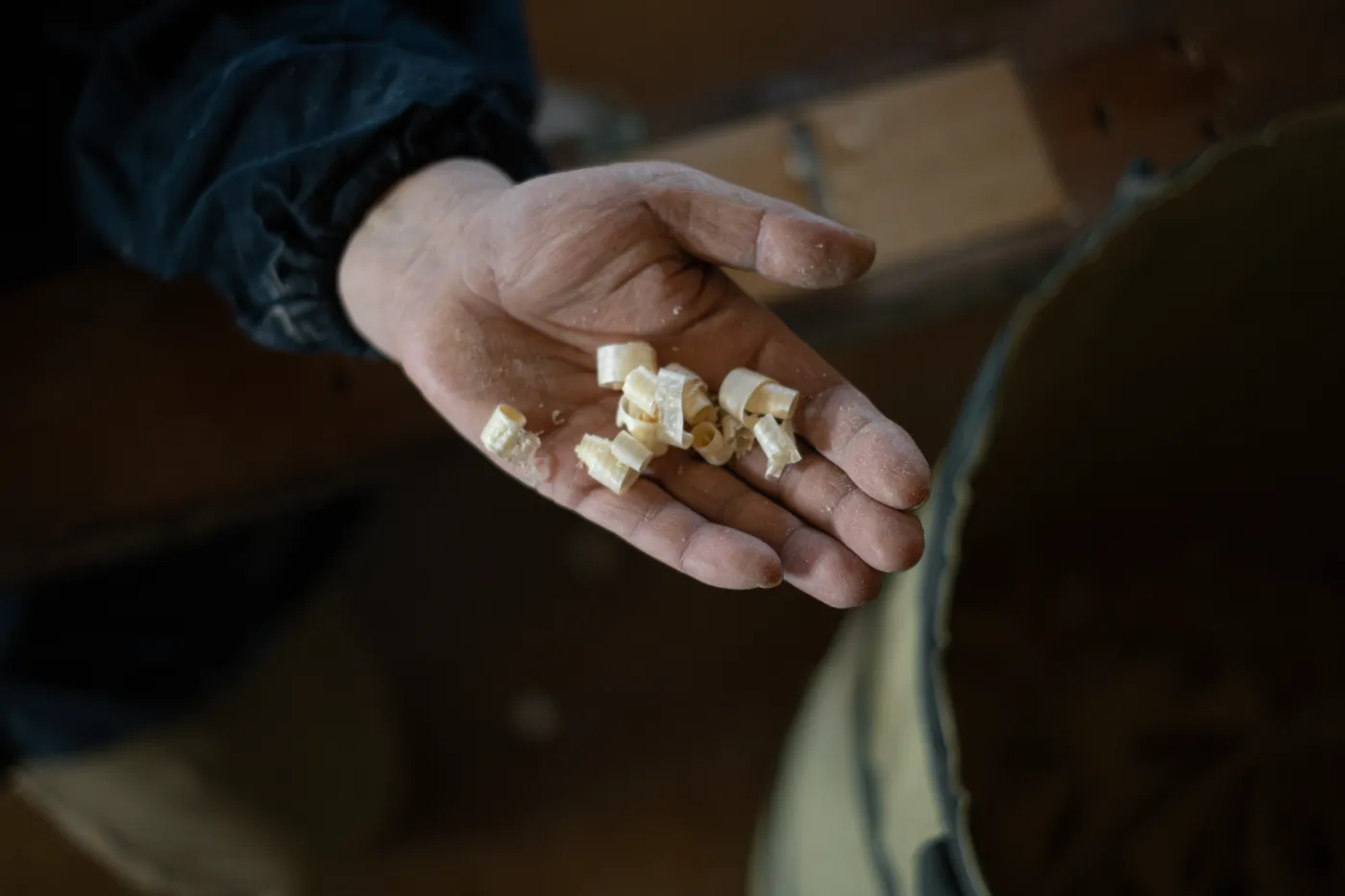
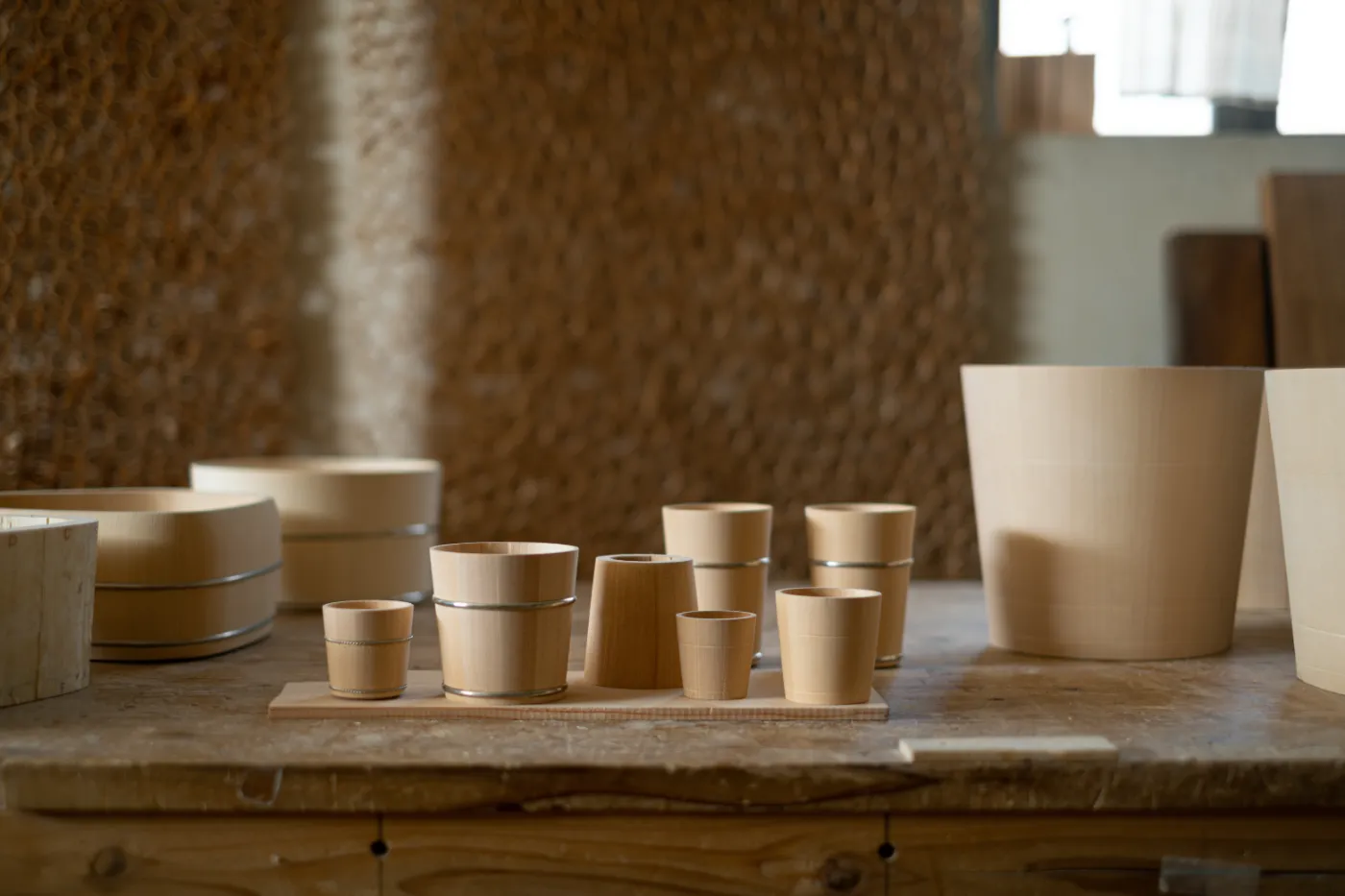
Balancing Tradition & Innovation
I know a famous painter. For most of his career, he drew meticulously detailed Nihonga, Japanese-style paintings. But later in his life, his works stopped being so detailed as he was no longer able to see so well. I actually prefer his later works.
This is what I mean by artists being able to change their styles, or evolve as they get older. But if craftsmen can’t make the same tub anymore, they should stop doing it.
I didn’t ask my grandpa directly, but that’s my guess.
Before taking over the craft, you studied photography and contemporary art, which seems to have heavily influenced your thinking and design sensibility.
After learning the techniques from your father, you eventually established your own studio. This has allowed you to create works that draw on the techniques from your father and grandfather but apply them to a much wider range of objects that fit with contemporary life and demands.
From champagne coolers to water pitchers, cups to vases, stools to large barrel-shaped Japanese tea rooms, and even a sauna, you are stretching the boundaries of tradition so that the techniques and wisdom of your craft can continue into the future and remain relevant.
How do you hold this tension between tradition and innovation?
I feel that the way we look at traditional crafts has definitely changed over the last 10 years, both inside and outside of crafts. Before, two of the words we have for tradition in Japanese, Dentou (伝統) and Denshou (伝承), were often used interchangeably when discussing craftsmanship.
Denshou is the tradition that is passed on unchanged from generation to generation. Keeping the forms and techniques without changing them, like an archive of sorts. The performing arts of no and kabuki are good examples, where the forms and techniques are handed down from generation to generation without any change.
Dentou, on the other hand, refers to tradition not as opposed to innovation but as something that evolves with time, where every new disciple adds something to it.
In a Dentou approach to tradition, lineage is valued, but change is also seen as inevitable. From this perspective, the innovations in my work become a part of the larger tradition of craftsmanship, leading to the generations that come after me.
Living conditions change, so it would be impossible to continue making wooden tubs the exact same way for the next 100 years. I feel like more people are understanding the concept of adding to the tradition so that it continues to evolve.
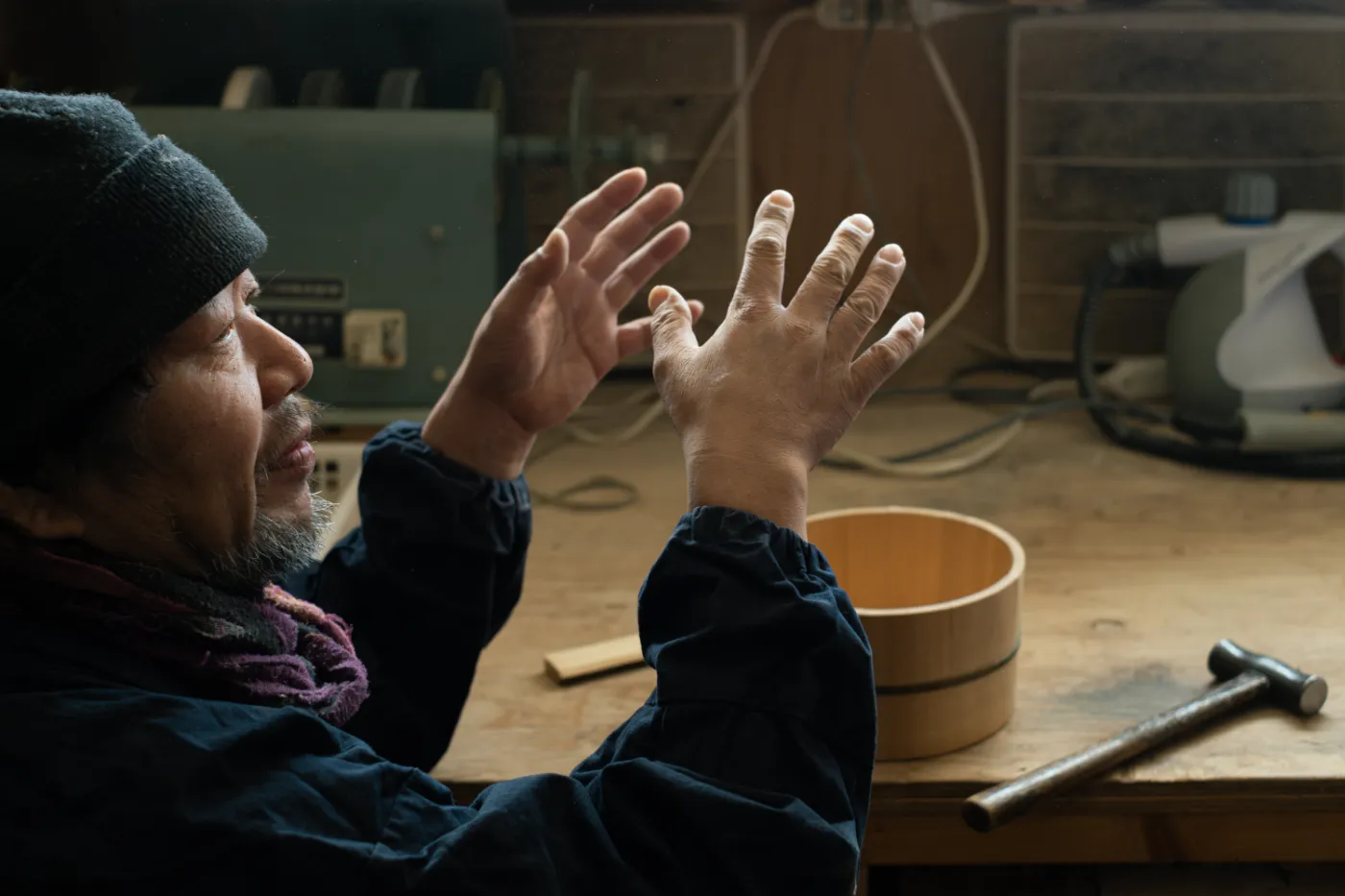
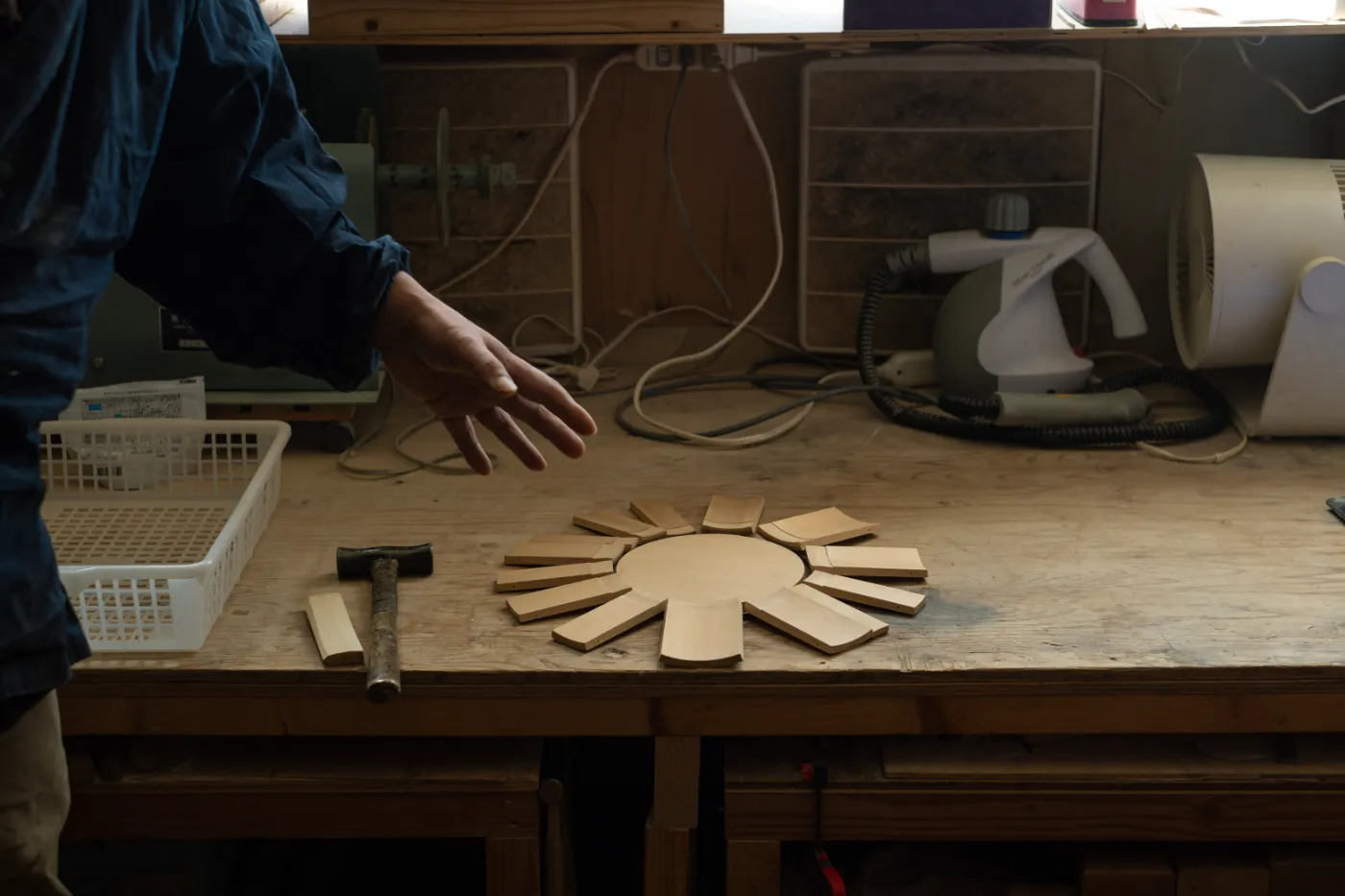
The Wisdom Embodied in Craftsmanship
Your work definitely seems to do that. So does the work of the other members of the craft collective you are a part of, which is called GO ON.
What is its mission, and how has it evolved over time?
GO ON is a progressive craft collective based in Kyoto with six members from different craft lineages. In addition to myself, it includes ceramic artist Hosai Matsubayashi XVI, tea caddy maker Takahiro Yagi, metal worker Toru Tsuji, bamboo artist Tatsuyuki Kosuga, and Nishijin textile producer Masataka Hosoo.
Our biggest mission is to pass on the wisdom that is embodied in craftsmanship to the next generation. That said, it wasn’t always the case.
It’s been about 12 years since we formed the group. The first five years, we were primarily focused on sustaining our own businesses. I think everyone came together initially because we thought joining GO ON would be profitable. In the early days, we competed with each other on who made the best sales, etc.
But after a while, we saw there was no point in doing that. We each already had our own market. So we started questioning the real purpose of GO ON as a group. After several years of discussion, we agreed that the future of crafts as a whole is our mission.
We wanted to make craftsmanship, being a shokunin, a job children could admire and aspire to become. It is relatively recent that this more profound mission has become our primary focus.
It’s like we created the vessel of GO ON and in the process, it changed us. It allowed us to think and grow differently, becoming a collective vessel for its mission and direction.
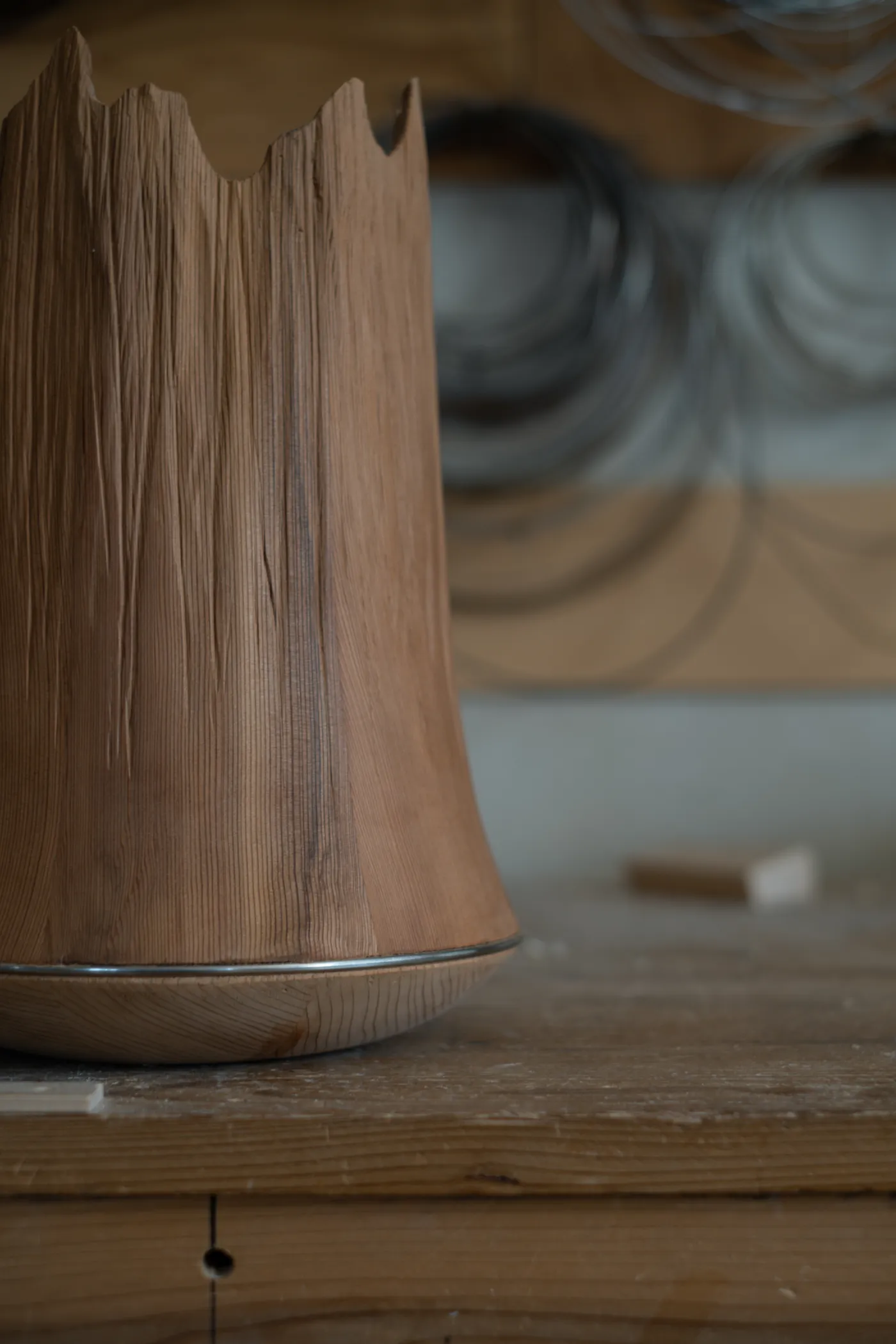
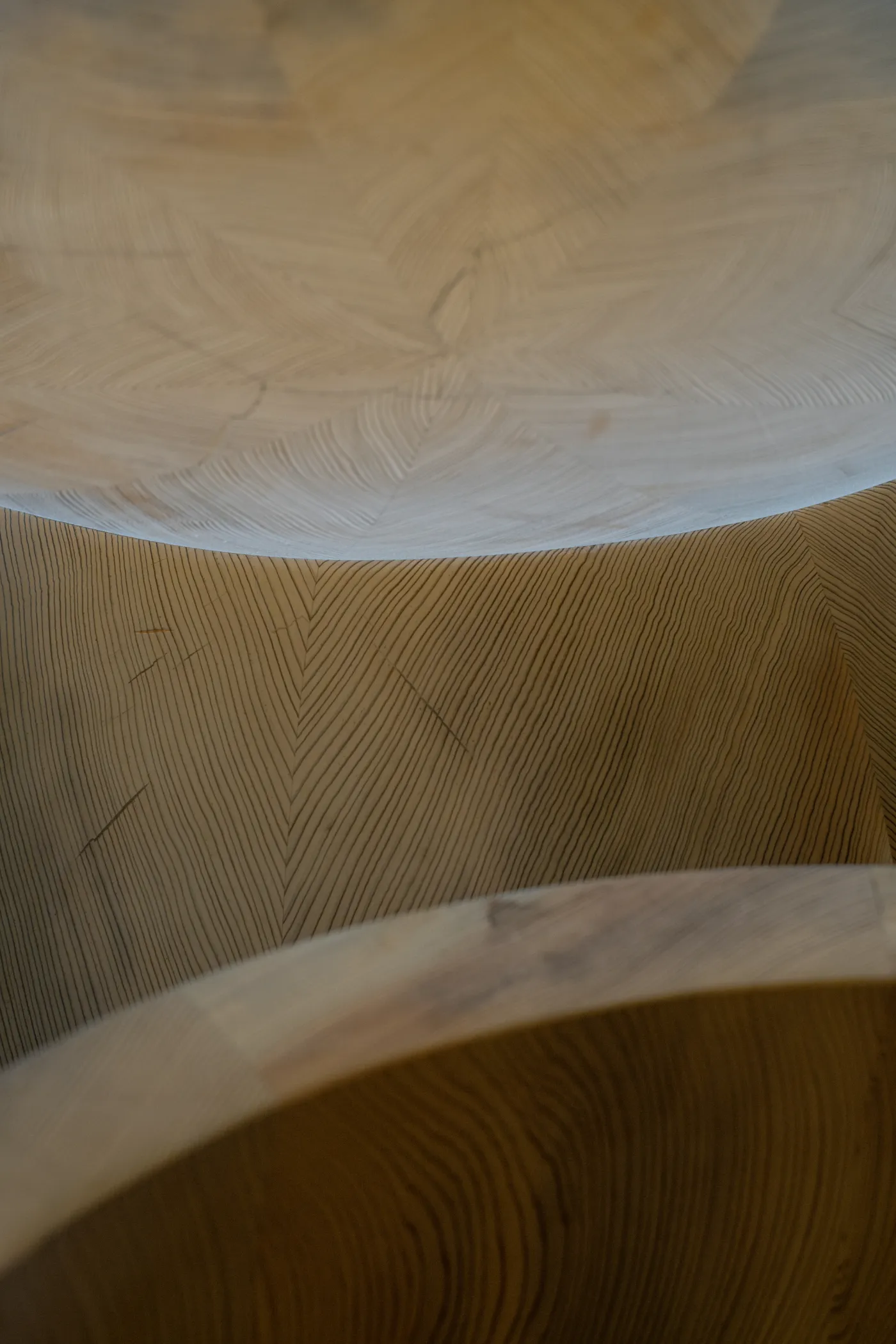
The Moment of Letting Go
Each member works with a different material: clay, metal, silk, bamboo, and wood.
Is it true that the material affects the personality of the craftsmen?
Of course! That’s the material we use every day for a living.
When I talk with Hosai san of Asahiyaki, he frequently uses the concept of ‘plasticity’ or ‘malleability,’ which is the very characteristic of clay itself. It can only come from a potter, and Hosai himself speaks without realizing it.
Another GO ON member Toru works with very fine metal wire. He has such bold, carefree character, but when it comes to work, he gets really meticulous. He needs precise measurements and details of each part even if we have provided him with a design plan. I often tell him, “Just give it a try and fix it after”, as woodwork is something that we can start making and then fix as we go along, but he doesn’t take it.
The tools Yagi san uses to make his metal tea caddies vary 0.1 mm. In the world of wood, 0.1 mm is just a part of friction. If I sneeze, wood can absorb the moisture and can expand that much.
Another point of difference is the moment of letting go and surrendering. I let go of certain control at the moment of encountering the material. The moment I encounter a tree, I can tell what I can and cannot do with the material, the shape, how the grains flow, etc.
For someone who works with pottery like Hosai, this moment comes later, when they put their work in the kiln and have no more control over what happens to it. So there is a difference in whether we let go of control in the beginning of the process or at the end.

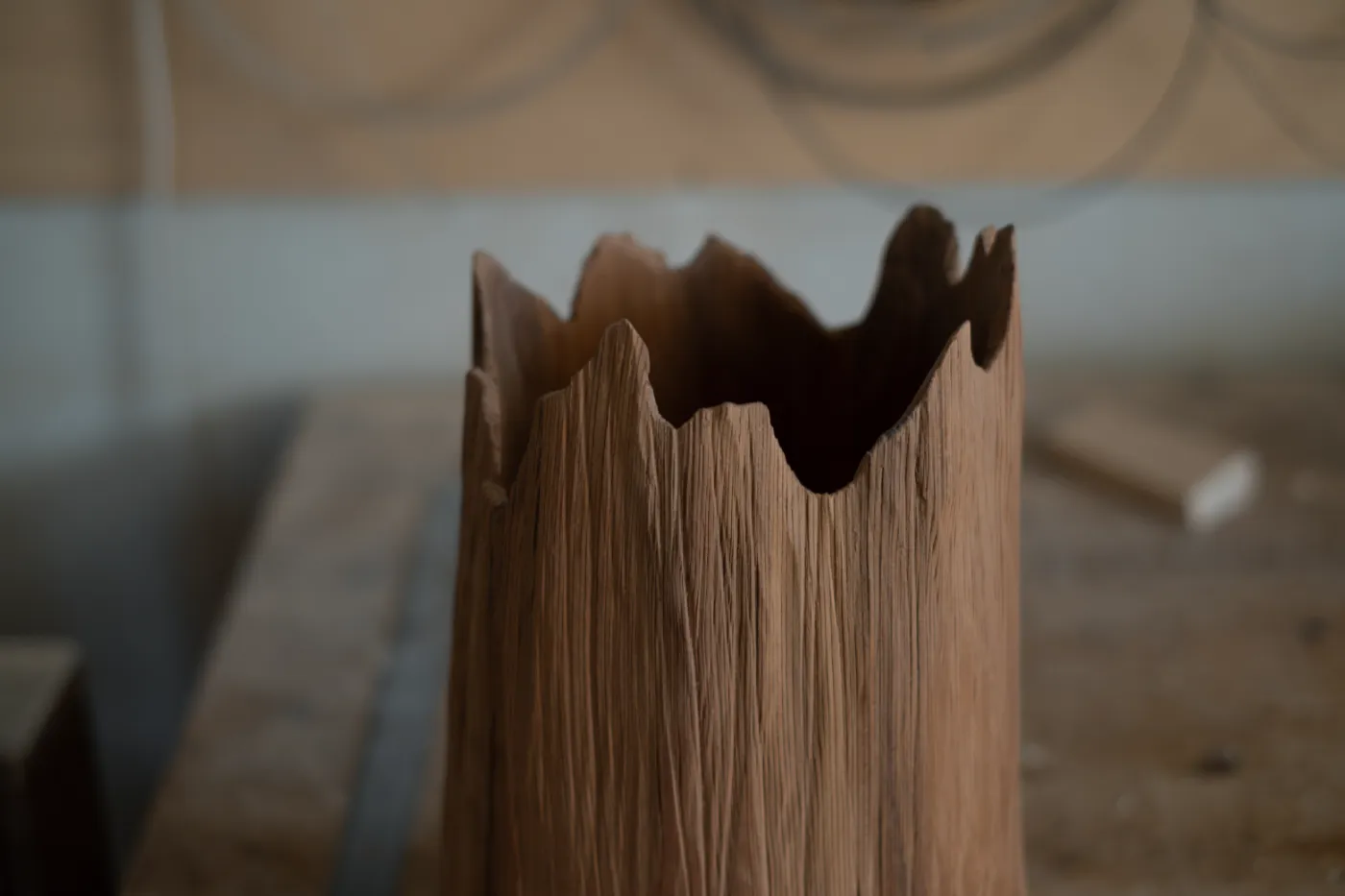
There is Beauty in Everything
What is an example of a wisdom piece that is embodied in craftsmanship that you feel holds relevance for contemporary society?
Craftsmanship is all about adapting to what is in front of us, rather than rigidly following a previously developed plan or concept. It’s this adaptability and functionality that give craftsmanship its appeal.
I often talk to Hosai san about how concepts can be added after products are made. Any object you craft has a concept hidden within if only you have the ability to distinguish it. I work hard to improve my ability to do so. It’s fine to identify the concept from the finished object.
If you write up a concept first and then follow it to the letter, you’ll end up with a very limited object in the end.
People shouldn’t forget that this is actually the default mode of the world. It’s highly unusual for things to go according to plan.
What is beauty for you?
I believe there is beauty in everything. Sometimes beauty is obvious at a glance, and sometimes you can look at the same thing for a whole year before you realize how beautiful it is. Everything is beautiful, only if we can see.
I’ve been training myself to find this beauty. I think that I’ve gotten to the point where I’ve seen so many things that I can often recognize beauty where others don’t, but I still have ways to go until I see the beauty in everything.
I imagine that the ability to see beauty in everything is akin to obtaining spiritual enlightenment. I’m still far from there, though.
My goal is to find hidden sources of beauty and give them form through my craft. That’s the craft approach to beauty as opposed to that of art. In the world of art, one has to be active and autonomous. But for me, I want to express something beautiful in my relationship with others. It’s not about expressing the idea of beauty within yourself. Craftsmen need to bring out the inherent beauty of materials.
The world of crafts is all about collaboration, connection, and communication with others.
That’s another saying we always use with GO ON members: the difference between “I” and “We.” We discussed this concept a long time ago, but I believe it’s one of the crucial ideas to pass on to the future of crafts. Craft is all about the “We.”
